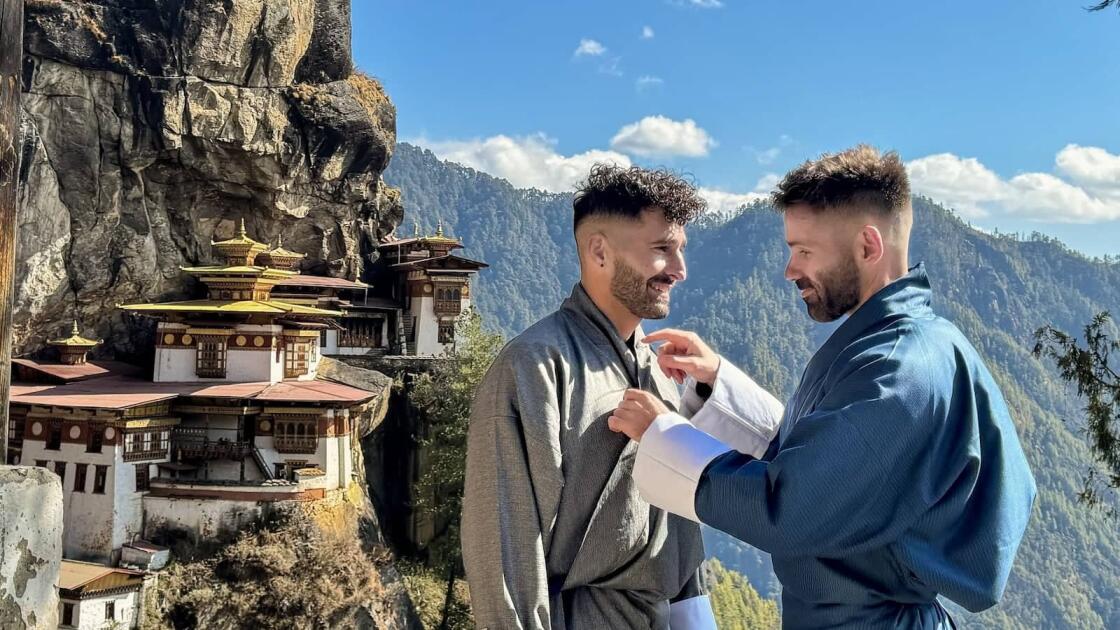Our detailed gay travel guide to Bhutan, a country clouded in mystery, wanders, and has recently opened up and embraced LGBTQ tourism.
Imagine Wakanda but in Asia! A progressive nation steeped in centuries-old traditions, resembling a rich tapestry that has been carefully preserved, reminiscent of the fictional Wakanda's seclusion.
Gradually, year by year, Bhutan is opening up even more to the outside world, much like when Black Panther began to open the doors of Wakanda…

Bhutan is like nothing we've experienced before, and we've been around! The culture has strong Tibetan influences, particularly the intricate artwork in every monastery and temple. The communal and straightforward lifestyle of traditional families in Bhutan reminded us a lot of the nomadic families we stayed in Mongolia. The food has a lot of similarities with Nepal and Tibet, such as the delicious momo dumplings. Politically, Bhutan maintains robust ties with India. This connection is evident in much of the pop culture, particularly Bollywood, as well as the large number of tour groups from India (Bhutan has a low visa fee for Indian citizens).
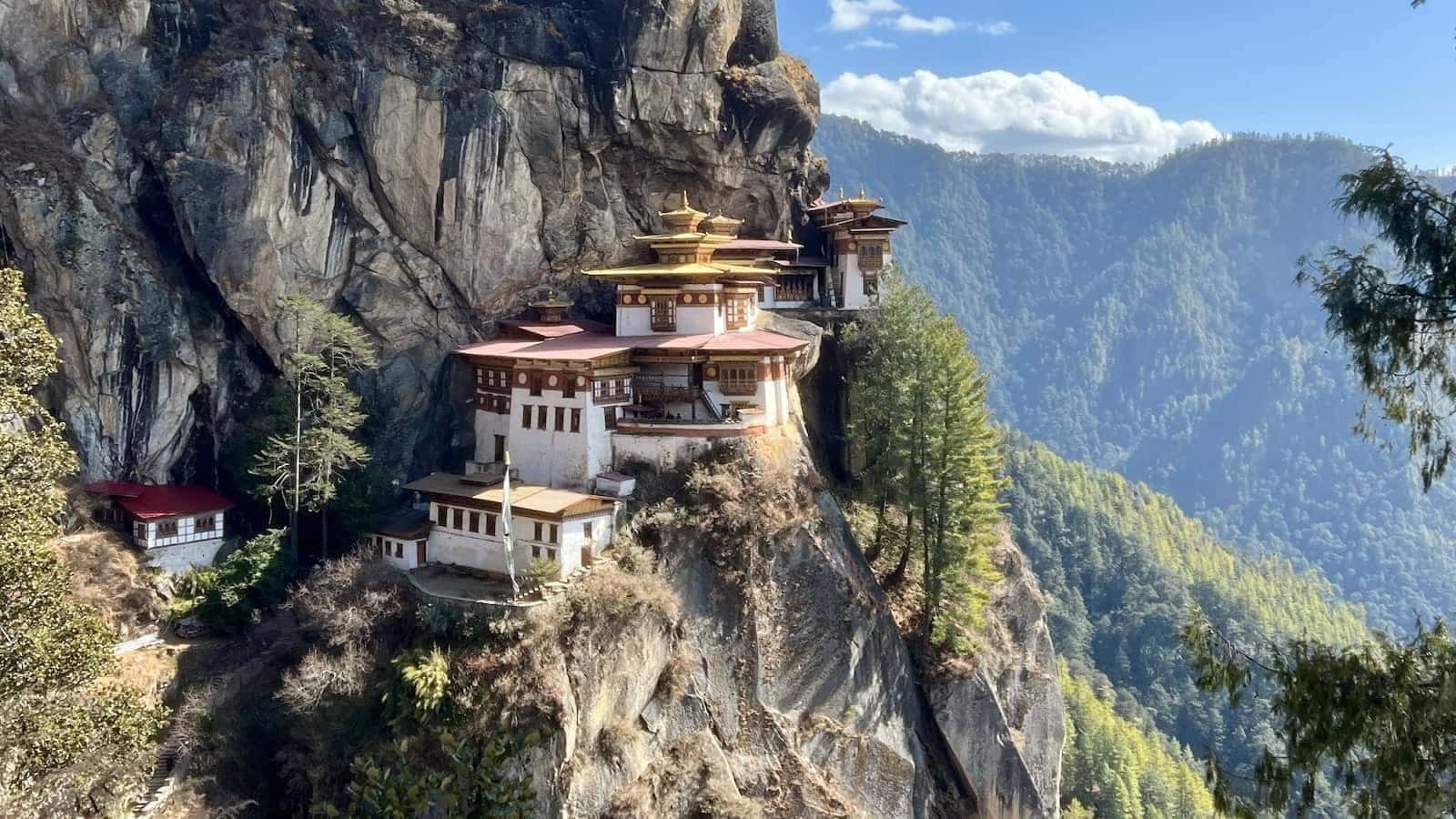
For years, the allure of this enigmatic landlocked country nestled in the Himalayas captivated us, prompting us to plan a trip in 2020. Sadly Miss ‘Rona put that dream on hold. To our immense pride and joy, Bhutan decriminalized homosexuality in February 2021! That was our official calling: we knew we had to visit this mysterious land as soon as Covid restrictions were lifted.
In January 2024, our long-cherished dream came true and we finally got to visit a place that we had both been eager to visit for many years. And what a time to visit Bhutan, when it is opening up more and more to tourism, particularly to LGBTQ travelers.
Heads up: We just wanted to let you know that this post contains affiliate links. That means if you book something through one of those links, we'll get a small commission, at no extra cost to you. It helps us keep our blog going – so thank you in advance for your support! ♥

GAY FRIENDLY TOUR OPERATOR
We visited Bhutan with Bhutan Mountain Holiday, an outstanding gay friendly operator based in Thimphu owned by the charismatic Karma. He embraced us with open arms, the fact that we are a same-sex couple completely irrelevant to him.
Our guide and driver had no issue with the that we are a gay couple. All the hotels Karma selected for us were gay friendly and we never had an issue getting a double bed.
1. Where is Bhutan and how do you get there!?
Bhutan is a landlocked country in South Asia, nestled between Tibet (China) to its North, and India to its south. Positioned on the eastern ridges of the Himalayas, the landscape is something else!
The only way to reach Bhutan is by plane. Paro has the only international airport and only two airlines serve Bhutan internationally: Druk Air and Bhutan Airlines.
Druk Air is the airline of choice for most as it is the national carrier of Bhutan and also flies to more international destinations including Delhi, Singapore, Bangkok, Kathmandu, and Kolkata. Drukair also operates 3 domestic destinations within Bhutan and extends its offerings to include helicopter services, expanding its scope beyond fixed-wing operations.
Remember that around 70% of Bhutan is enveloped by the Himalayan Mountains, guaranteeing breathtaking views from your window seat. Our heads up: get a left-hand side seat when flying into Paro, and a right-hand side seat when departing to maximize your scenic aerial experience!
When we visited Bhutan, we first stayed in the gay scene of Bangkok for a week and then took a flight to Paro with Druk Air. Otherwise, if flying in from Europe or the US, we recommend going via Delhi, Singapore, or even Kathmandu.
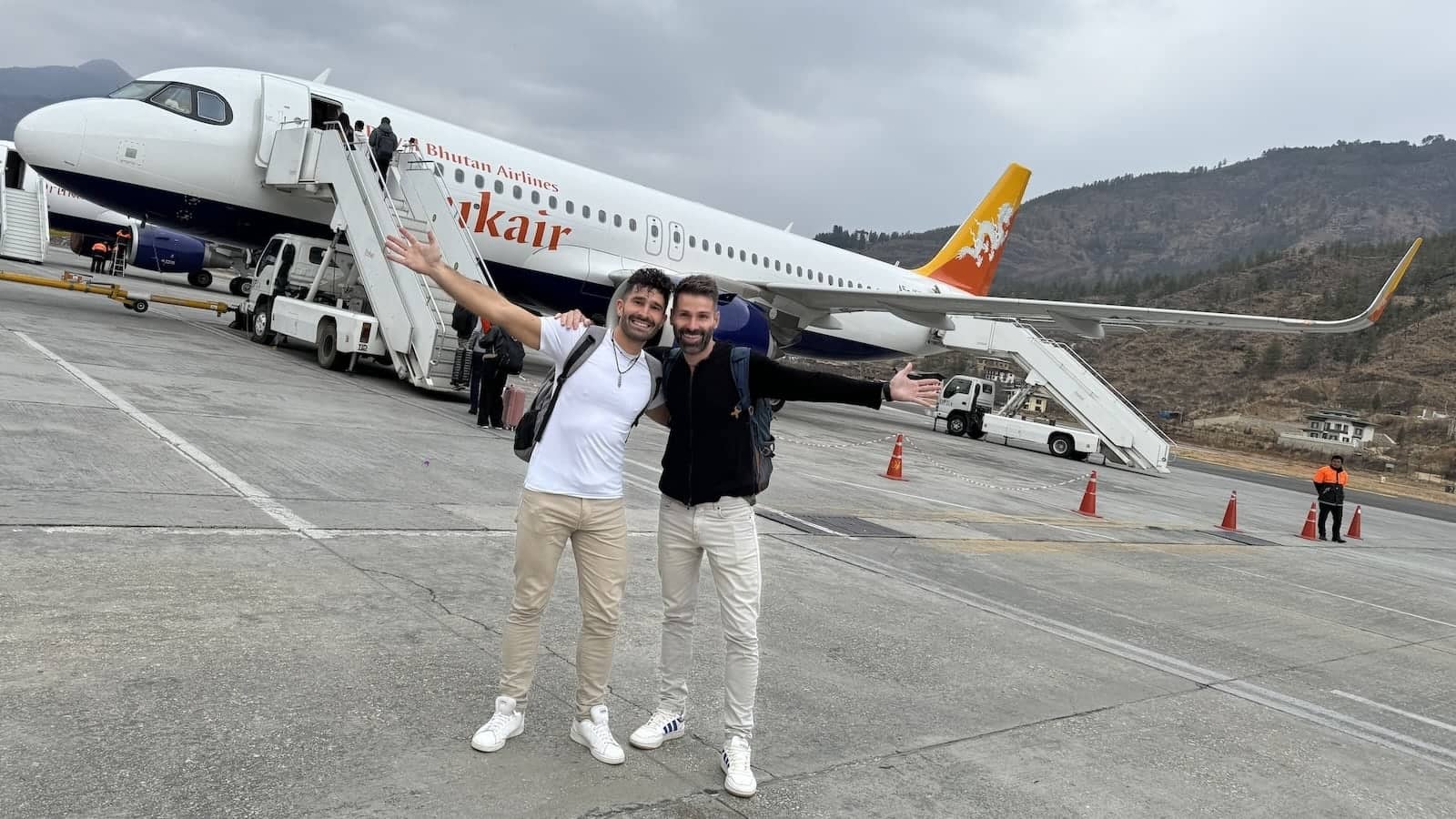
2. How much does it cost to visit Bhutan?
Bhutan focuses on high-value, low-volume tourism. It's an expensive destination. However, once you're there, day-to-day expenses are comparable to neighboring India and Nepal. However, unlike India and Nepal, Bhutan does not have a backpacker scene and shows no inclination to establish one anytime soon!
The Bhutanese government requires every tourist to pay a daily fee of $100 (for Indian citizens it's around $14!). On top of this, every tourist is required to have a tour package, which will include a guide, driver, activities, food, and accommodation. On top of this is the cost of your international flight from Europe/USA to Delhi/Singapore/Bangkok, and then your onward flight with Druk Air or Bhutan Airlines to Paro.
This focus on high-value, low-volume tourism aligns with Bhutan's commitment to preserving its pristine environment and safeguarding against the detrimental effects of mass tourism. For instance, the country's Constitution mandates that a minimum of 60% of the land must be covered by forests (the actual amount of the country covered by forests is closer to 70%). For this reason, Bhutan is one of the few carbon-neutral countries in the world. You *get* our Wakanda comparison now, right?
The result of this exclusivity is one of the most unparalleled and memorable trips you'll ever go on – no other place we've been to quite compares to Bhutan!
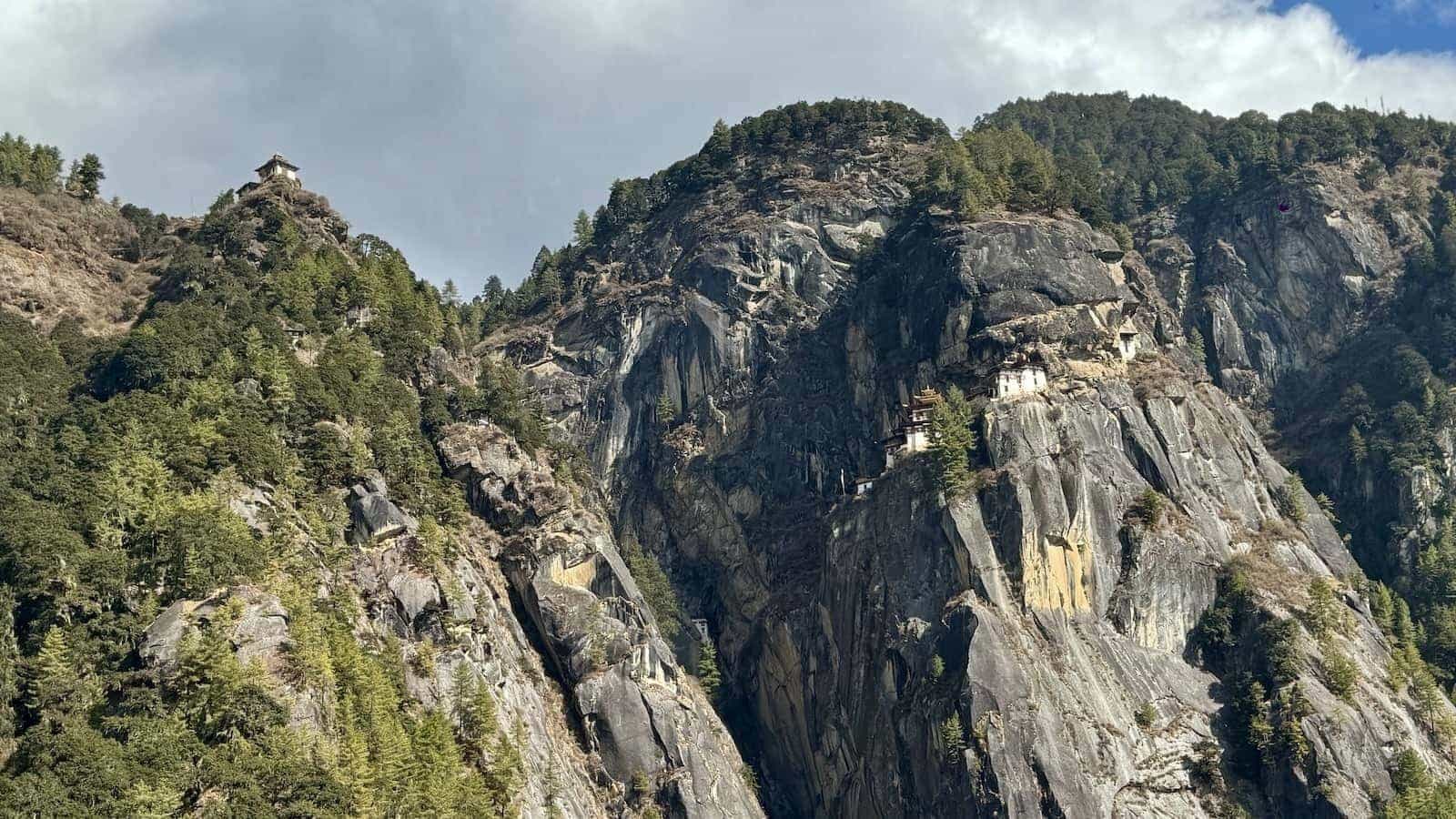
3. Is Bhutan safe for gay travelers?
Yes, it is, but we need to elaborate.
Firstly, manage your expectations! Bhutan is not the place to visit for exuberant gay parties like those you'd find in the gay scene of Barcelona or Wilton Manors in Fort Lauderdale. There is no gay scene in Bhutan at all. There are no gay bars, clubs, or events in Bhutan. If that's what you seek, we suggest getting that out of your system in Singapore or Bangkok before you fly into Paro.
Bhutan is the place to come to experience a Tibetan Buddhist way of life with traditions that date back centuries, still actively practiced today. As Karma from Bhutan Mountain Holidays aptly put it, “Tourists from the West love coming to Bhutan to experience life as it was in the past”.
The Bhutanese extend a warm welcome to all tourists, regardless of sexual orientation. Throughout our journey, everyone we encountered was friendly and eager to share their culture. While Bhutan is a conservative society with no specific LGBTQ laws, it notably repealed its anti-gay law in early 2021. This marks a significant stride in a continent where many countries criminalize homosexuality, sometimes with severe penalties, including imprisonment or death. For more insight on this, read our article about the most gay friendly nations in Asia.
The one thing we'd say about Bhutan is that it is very safe. Crime rates are low, particularly among foreigners. At no point did we feel threatened, affirming Bhutan as a haven for a tranquil and worry-free travel experience.
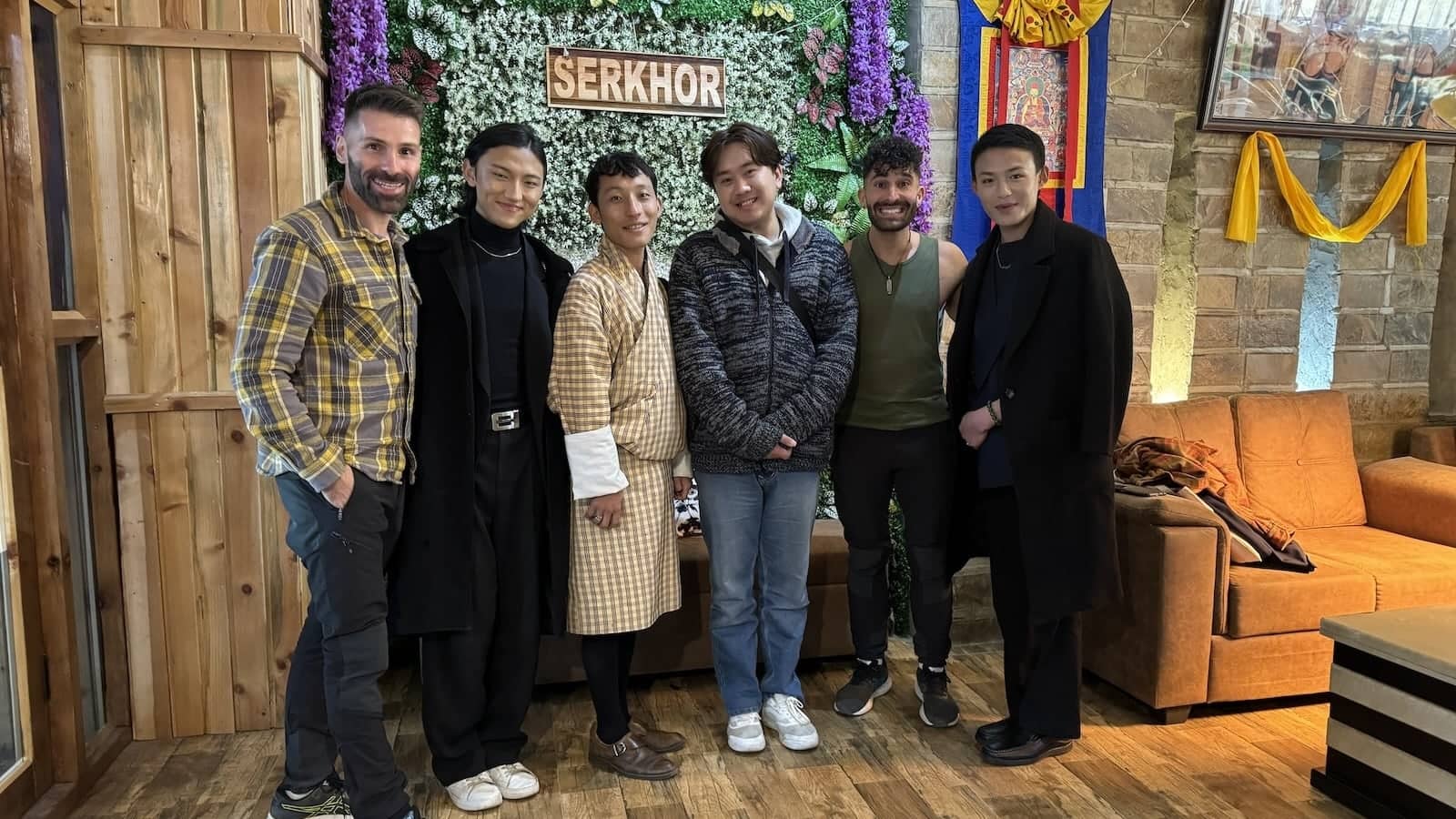
4. PDAs in Bhutan for LGBTQ travelers
Bhutan is a conservative nation. Public displays of affection are rare even among straight couples, although this inherent shyness is slowly changing.
We're not saying Bhutan is homophobic, simply that the Bhutanese refrain from openly showcasing affection in public settings, particularly around sacred places like temples or monasteries.
In alignment with the local cultural norms, we opted to refrain from any public displays of affection throughout our trip, and we recommend fellow travelers exercise similar discretion as a mark of respect for the prevailing cultural values in Bhutan.
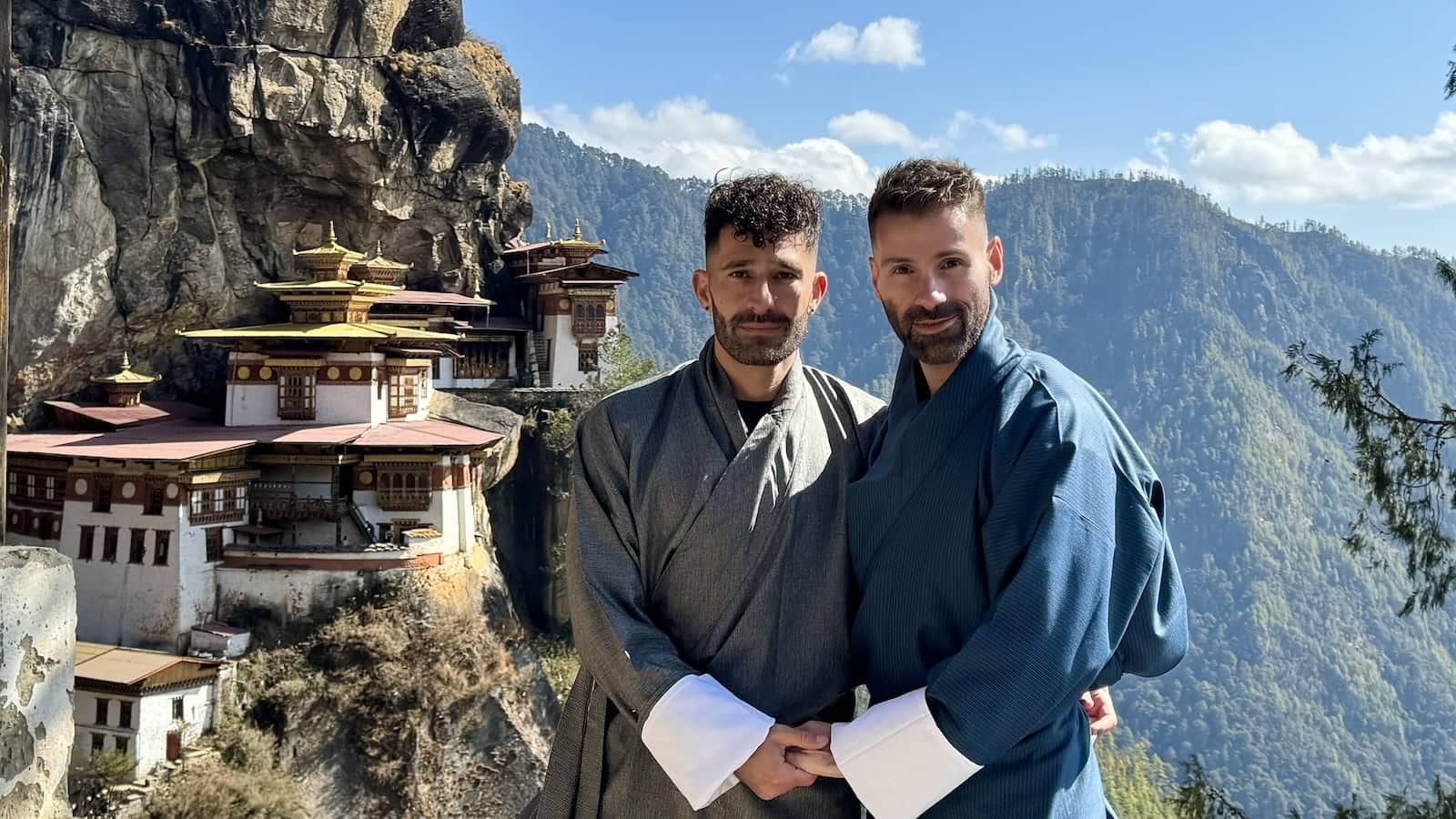
5. When to visit Bhutan
Bhutan is a year-round destination. The peak seasons are in Spring (March, April, and early May), and the Fall months of October/November.
The two main factors that govern the seasons are, of course, the weather, and the timing of festivals:
The year-round weather in Bhutan
Bhutan has 4 seasons. Spring unfolds from March to May, followed by summer from June to August, Fall graces the land from September to November, and winter settles in from December to February.
The low season is June to mid-September when the Monsoon takes hold of the country, bringing with it heavy rain, cloudy weather, and unreliable domestic flights.
Shoulder season is in late February, early March, and November when the average temperature is not too high and crowds are sparse. We visited in late January at the height of winter. It was cold, particularly at night, but our advice is to just pack layers and dress as you would back home during the winter months.
The advantage of coming to Bhutan in the shoulder or low season is that hotel prices are lower and you'll feel like you're the only foreigner visiting. On numerous occasions on our trip, we felt like we were the only people staying in our hotel, adding a unique touch to our Bhutanese adventure!
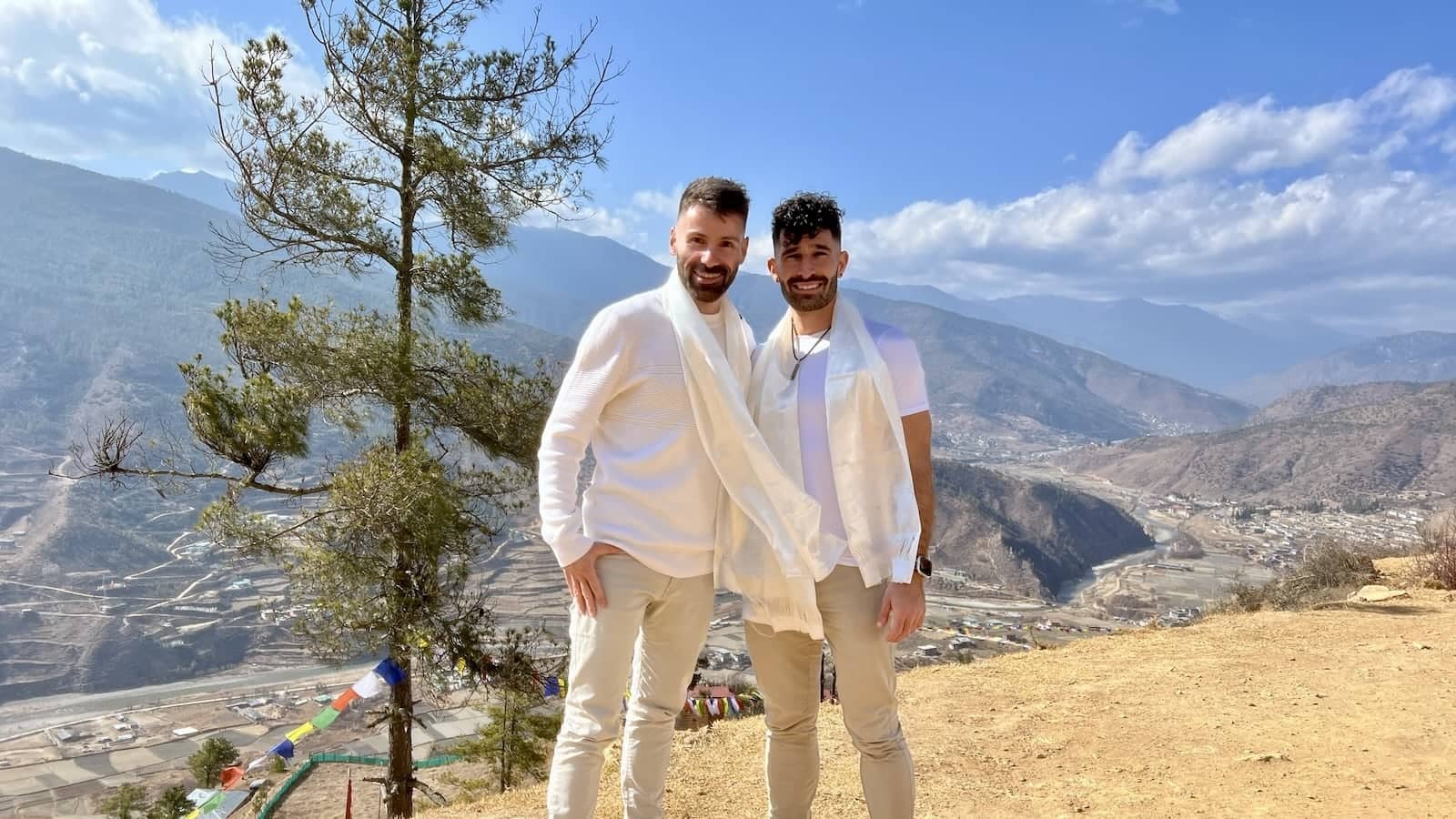
The main Spring festivals of Bhutan
The peak season of Bhutan is largely governed by the timing of the main festivals. The main ones during the Spring months are the Paro Tshechu, and Punakha Dromchoe.
The Paro Tshechu is a 5-day festival that takes place in March/April. It is the largest festival in Bhutan attracting huge crowds. It features dances by specially trained monks, dramatic masks, and intricate costumes. The pinnacle is the unveiling of a huge thondrol embroidered image of Buddha on the final day.
The Punakha Dromchoe is another 5-day festival that takes place in February/March. It includes a dramatic recreation of a 17th-century battle with the Tibetan army featuring hundreds of costumed warriors (called pazaps).
Other popular Spring festivals to look out for include the Gasa Tsechu in March and the Chorten Kora in April.
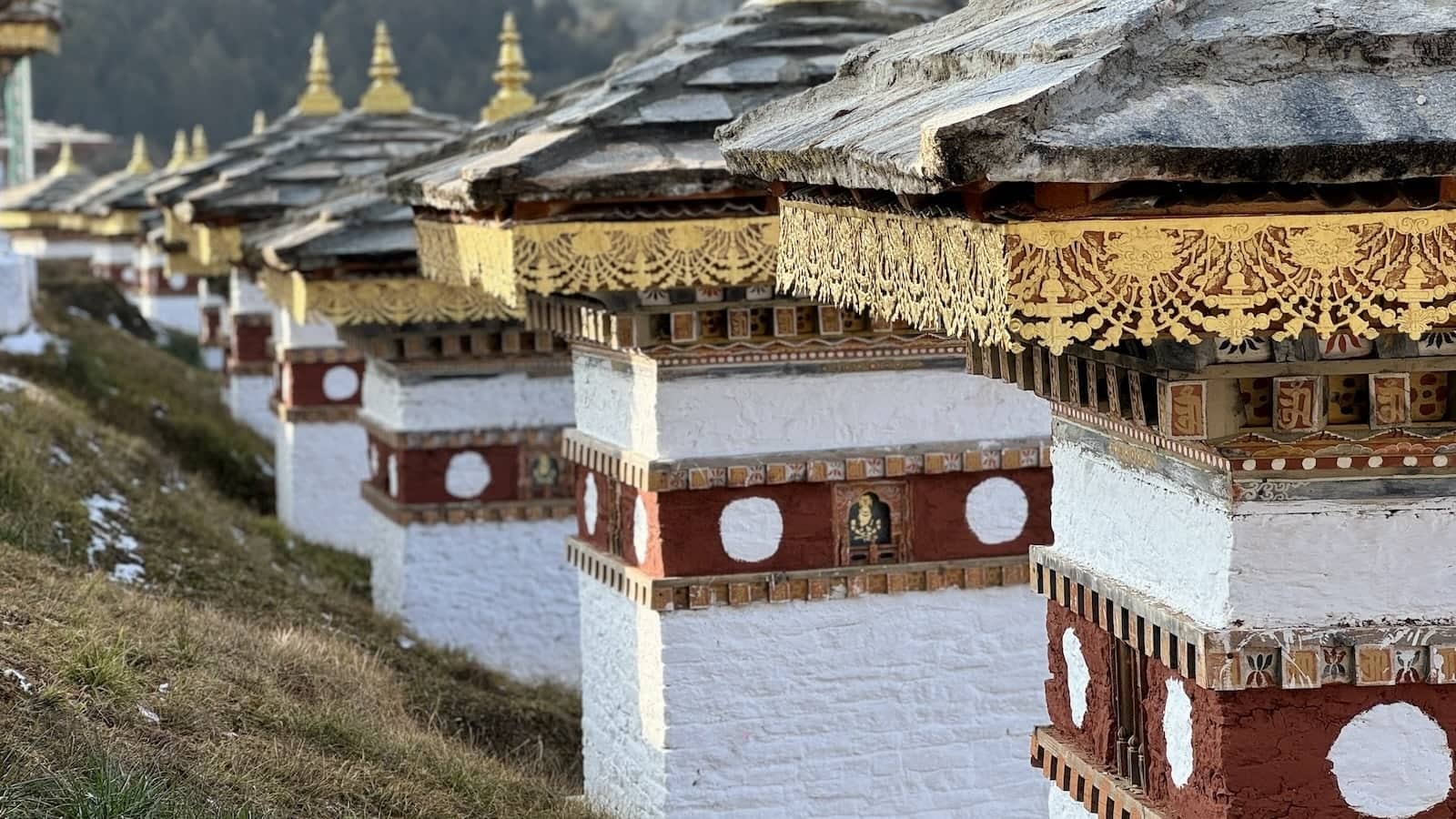
The main Fall festivals of Bhutan
During the Fall months, the main festivals are Thimphu Tsechu and the unique Jampey Lhakhang Drup.
The Thimphu Tshechu is a 3-day festival that takes place in September/October at the impressive Thimphu Dzong. It features sacred Cham dances, which include monks dressed in ornate costumes.
The Jampey Lhakhang Drup in Central Bhutan is a 5-day festival that takes place in October. It is famous for its midnight naked fire dance called ‘Tercham', a unique ritual dating back to the 8th century, performed to ward off evil spirits!
Other popular Fall festivals to look out for include the Royal Highlander Festival in October and the Trashigang Tsechu in November.
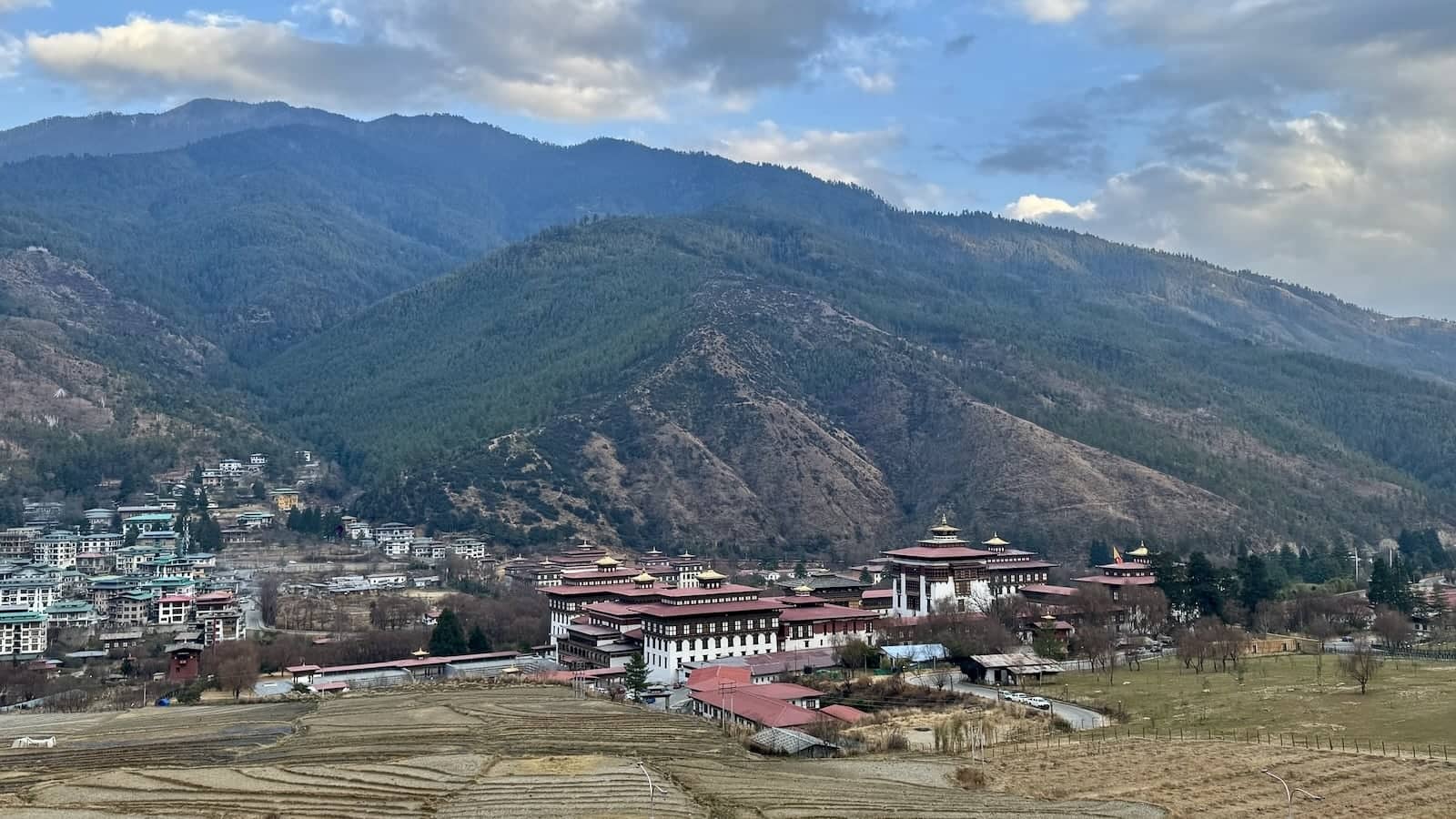
6. LGBTQ tours of Bhutan
There is an annual gay tour every October hosted by Out Adventures. Additionally, Bhutan Mountain Holidays, an outstanding gay friendly local operator based in Thimphu offers a variety of tours throughout the year.
Bhutan Mountain Holidays
Karma and his team at Bhutan Mountain Holidays rank among the top tour operators in Bhutan, earning high praise for their services. Headquartered in the capital, Thimphu, they offer diverse itineraries ranging from 4-7 day tours covering main highlights to more extensive journeys exploring remote areas. Notably, their offerings include the renowned Lunana Snowman Trek, a 27-day expedition.
For us they curated a jam-packed 7-day itinerary ensuring we experienced the key highlights of Bhutan, focusing on Paro, Thimphu, and Punakha. We were thoroughly impressed. The team displayed no concerns about us being a gay couple and the hotels we stayed in extended warm welcomes without any issues.
Out Adventures Bhutan gay tour in October
Every October, Out Adventures 2 gay tours in Bhutan, each one over 9 days. On this tour, you’ll visit Dochula Pass en route to Punakha Dzong, the former capital, then Gangtey Monastery in the picturesque Phobjikha Valley. The tour culminates at Paro Taktsang, AKA The Tiger’s Nest, a sacred Buddhist monastery overlooking the Paro Valley – see below!
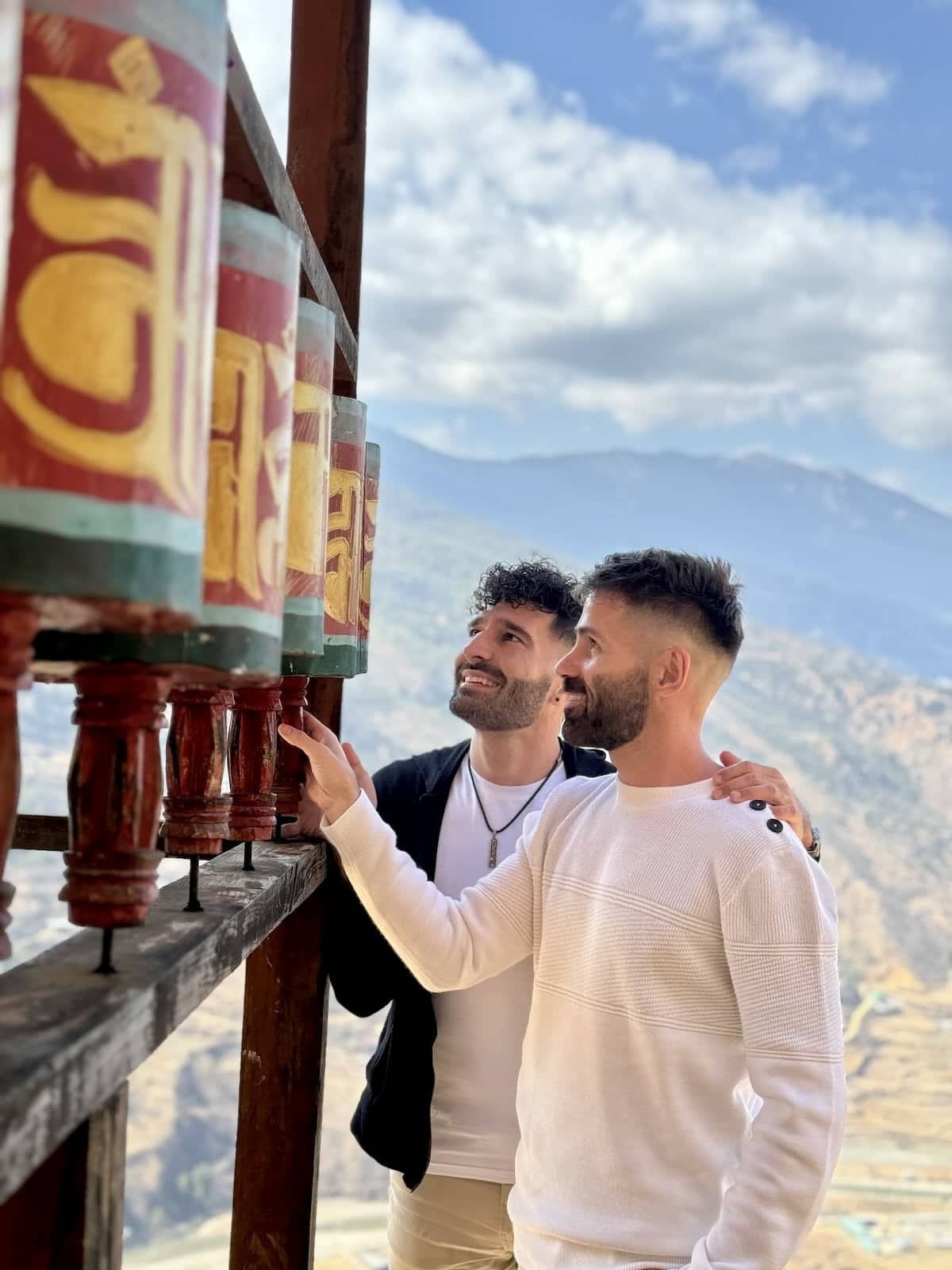
7. Highlights of Bhutan
What sums up Bhutan for us is Lonely Planet's intro: “a land where men wear medieval-looking robes, where Tibetan Buddhism guides official policy, and where the 17th century often feels more relevant than the 21st”.
Bhutan certainly left an indelible impression on us! Here are the highlights from our trip:
Hike up to Tiger's Nest Monastery in Paro
From the moment we laid eyes on pictures of the famous Taktashang (aka the Tiger's Nest Monastery), we knew this was our #1 Bhutan Bucket List must-see! It's also the most visited site in the country. The Tiger's Nest Monastery is perched on the side of a cliff at an elevation of 3,120 meters (10,240ft). The only way to reach it is to hike up (around 2 hours…4 hours if, like us, you stop to take a gazillion photos!). Along the way, we passed water-powered prayer wheels and numerous viewpoints. At around 2,940 meters (9,646ft) we stopped at the Taktsang Cafe for coffee amidst an impressive view of the monastery.
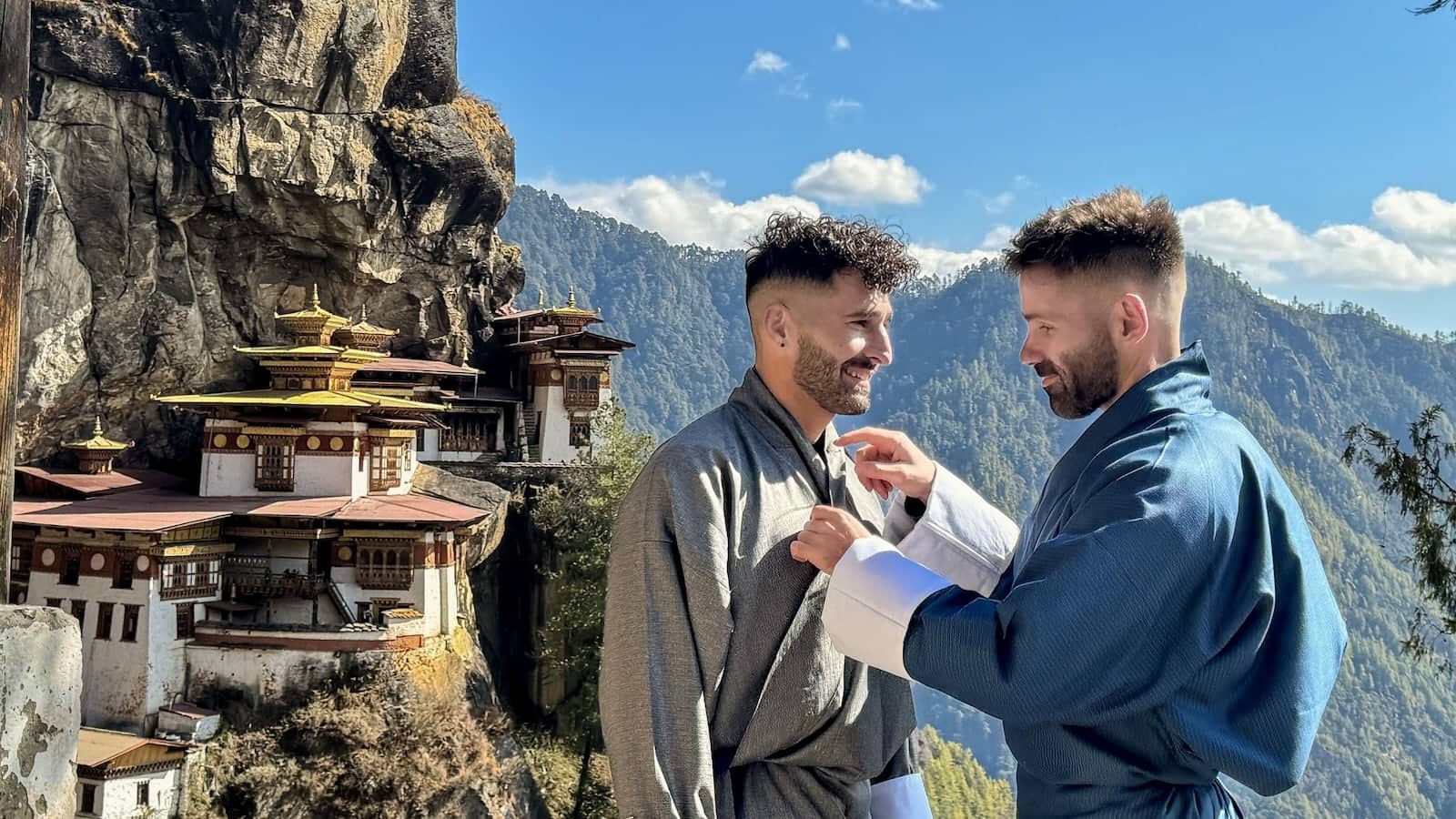
Discover the fascinating phallic art!
Yes, you read it correctly! Rest assured, we're not being smutty. The phallus holds significant popularity in Bhutan, revered as a symbol of good luck and a deterrent against malevolent spirits. This unique tradition traces its roots to the veneration of the sexual exploits of the ‘Divine Madman' Lama Drukpa Kunley (1455-1529). To honor him, a yellow-roofed temple named Chimi Lhakhang was (ahem!) erected. The village surrounding the temple has transformed this reverence into an impressive, er, phallus industry! The buildings are adorned with impressive artwork depicting different shapes and sizes of phalluses. You can even buy said artwork in the many souvenir shops here along with intricately carved wooden penises and phallus keyrings. One shop even had a penis-shaped airplane souvenir with Druk Air on it!
Naturally, we bought ourselves a large wooden carved penis (its artistry is truly magnificent!)…it certainly takes our article on how to travel safely with sex toys to a whole new level!
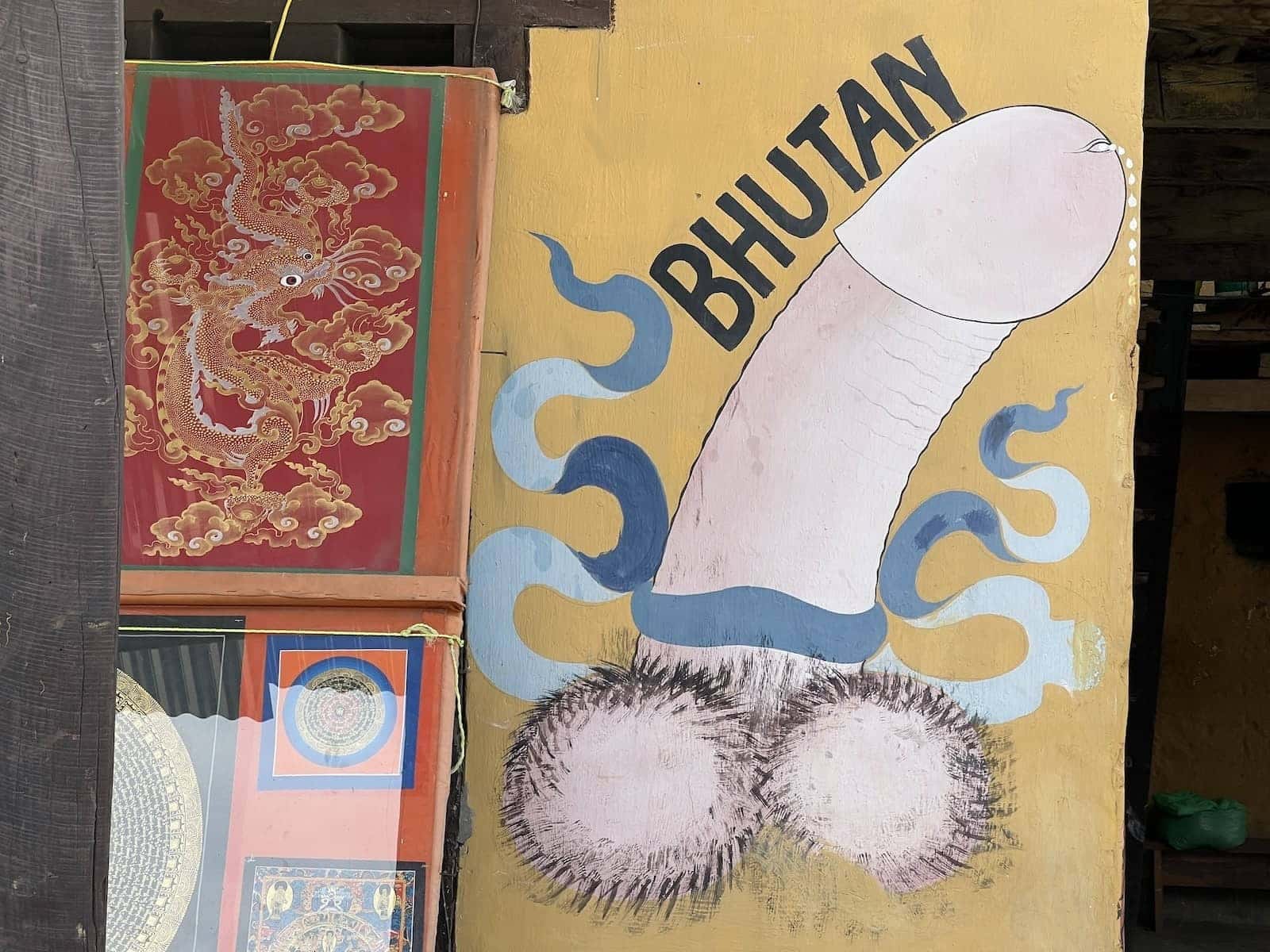
Buy a gho and wear it during your trip
We recommend immersing yourself in Bhutanese culture by donning the national dress – the gho for men and kira for women. This is not just a garment, it embodies the cultural identity of Bhutan!
Wearing the gho is a mandatory practice for those working in government offices or schools and is also reserved for special occasions, festivals, and visits to Dzongs and certain monasteries. We recommend buying one to wear for your trip – they are inexpensive, starting from $30, and make for a pretty unique souvenir. Bhutanese also love it when they see foreigners wearing their national dress. It reminded us of when we wore kilts for our Scotland road trip. If you prefer not to buy one, ask your guide if they have one you can borrow for your trip, which is what we did with Bhutan Mountain Holidays.
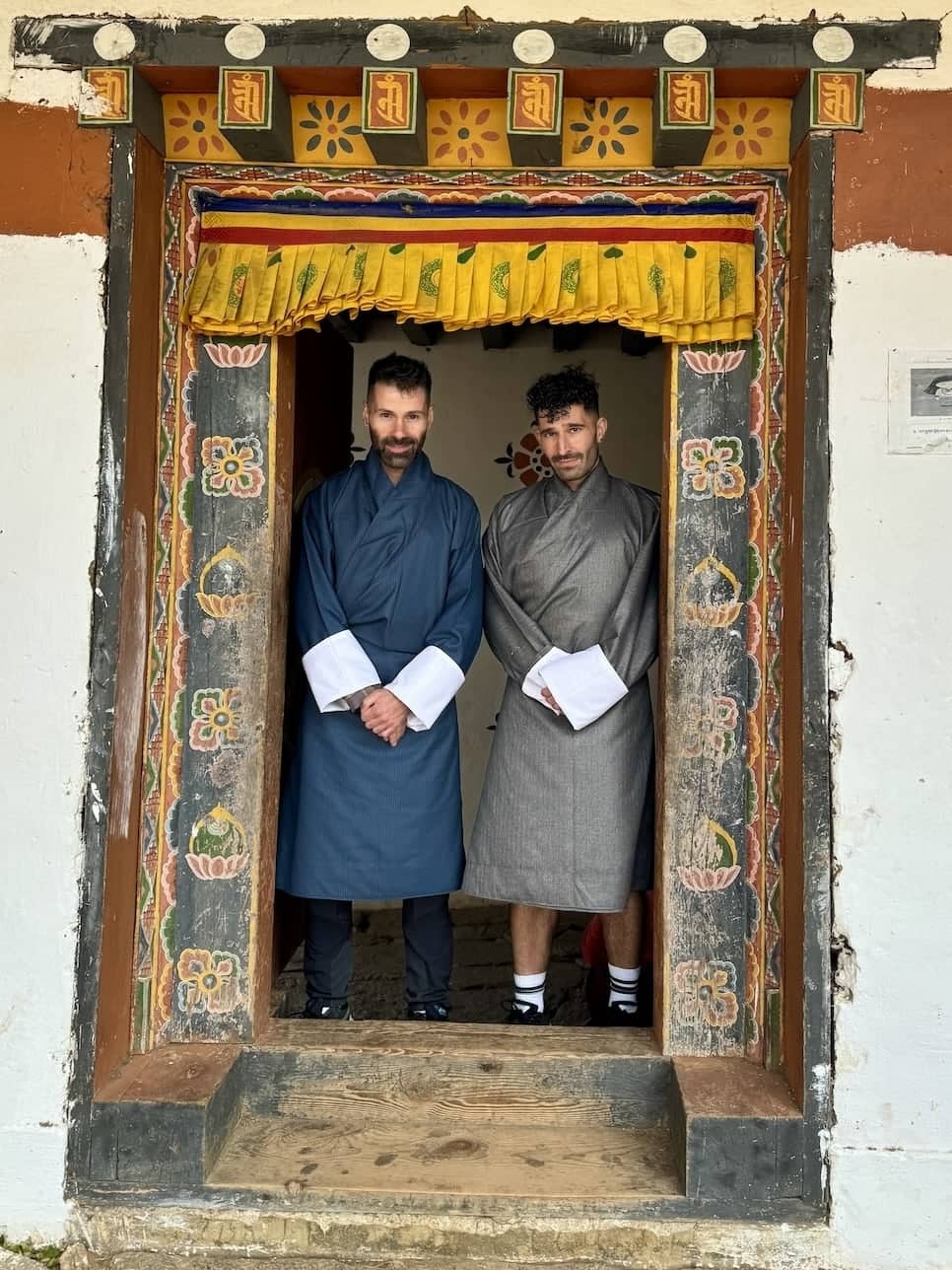
Pose by the giant Golden Buddha Dordenma in Thimphu
The Buddha Dordenma Statue is an impressive site to behold! It's enormous, standing proud at 52 meters (169ft) high making it one of the largest statues of Buddha in the world. The statue is made of bronze with a cover of gold which symbolizes indestructibility. The throne above which the colossal Buddha sits is a large meditation hall, where hundreds of devotees meditate every day. The hall also contains over 100,000 smaller Buddha statues, all made of bronze and gilded in gold, just like the big man outside. Also inside is the beautiful, unique Tibetan artwork adorning the walls, which is so ubiquitous throughout Bhutan…BUT no cameras/photos are allowed inside!
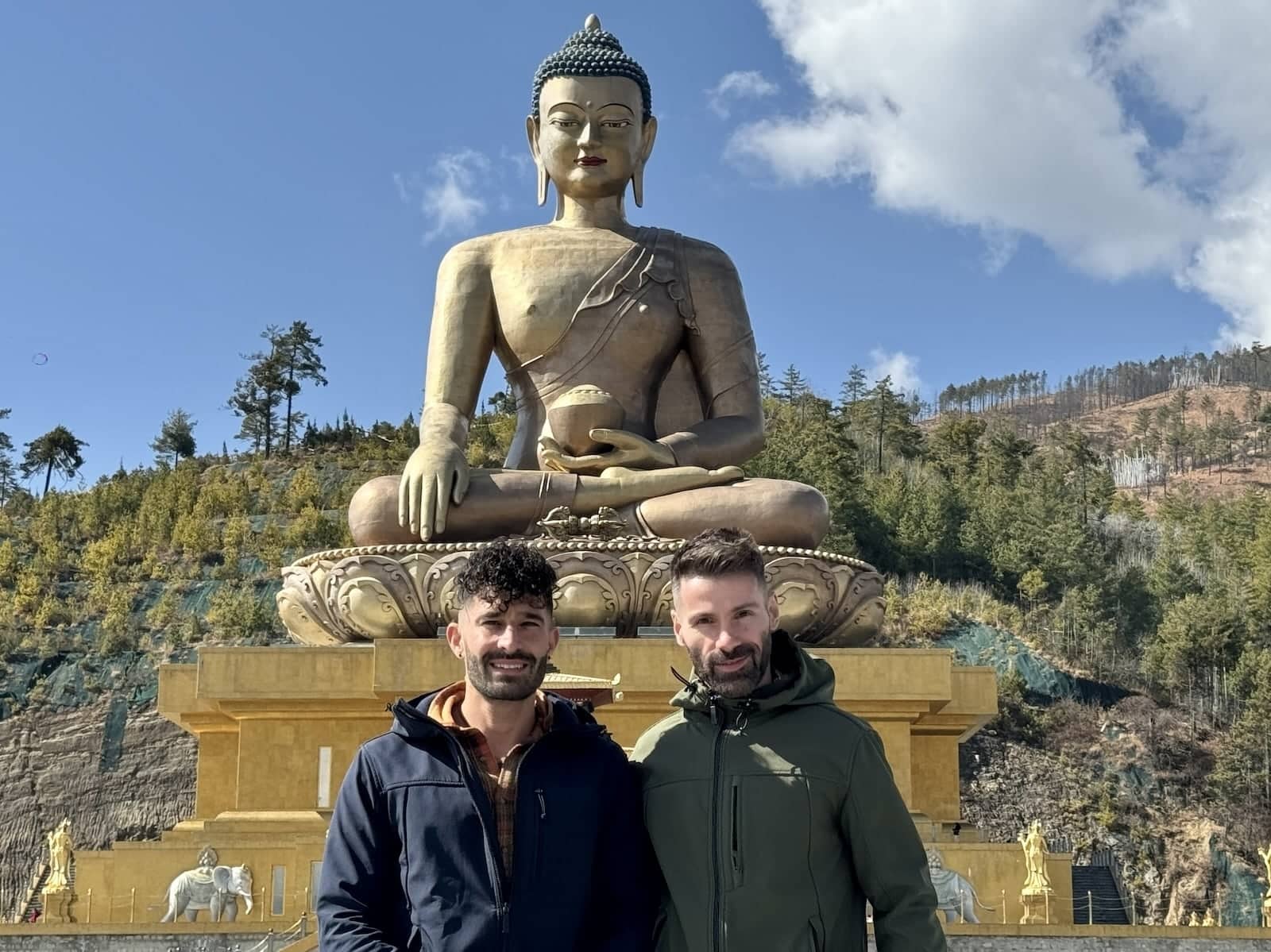
Stay with a local family
For a more immersive experience of the day-to-day culture of Bhutan, consider staying with a local family. Many locals have established a homestay experience where visitors can stay, cook, eat, and break bread with the family. We were keen to try this out to get a more in-depth experience of the day-to-day culture of Bhutan. We stayed with the family running the Tshering Farmhouse in Paro. The food was delicious and super spicy! Our other highlight here was their hot stone bath, an ancient tradition in Bhutan; for us a welcome way to relax after a long day hiking up to the Tiger's Nest Monastery.
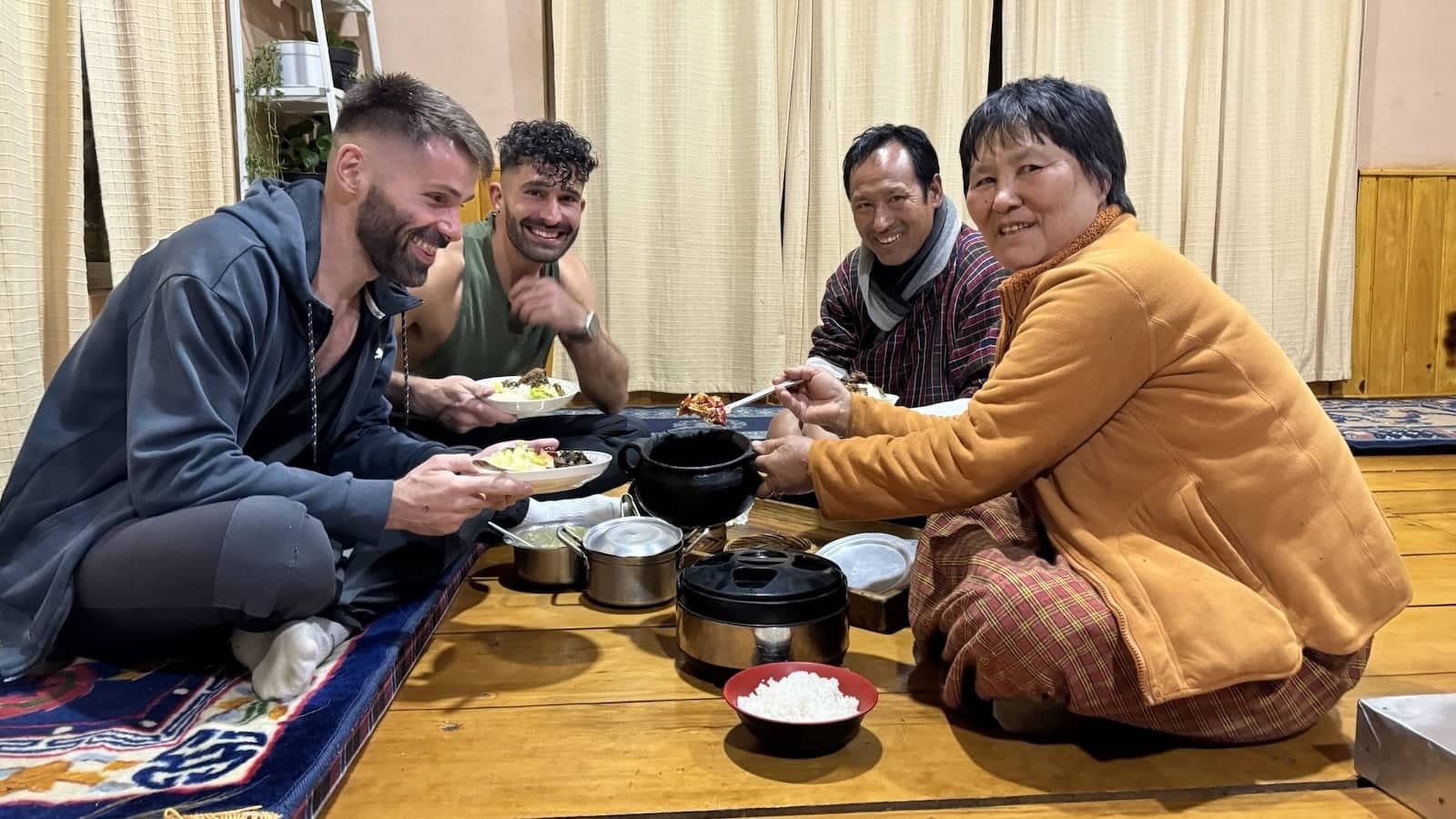
Explore dazzling dzongs
A dzong is a traditional Bhutanese fortress, initially built in the 1600s as a defense against impending attacks from Tibet. Today most of the Dzongs in Tibet are still used for government administration, ceremonies, and other functions. They are so heavily revered that people entering are required to wear a gho with a specific scarf (kabney), the color of it representing their status in society. For example, everyday folk wear a white scarf, red for people who have done something outstanding for Bhutan, and saffron for the King and Chief Abbot. Among the most impressive Dzongs to explore in Bhutan are Punahkha Dzong, Simtokha Dzong in Thimphu, and Paro Dzong.
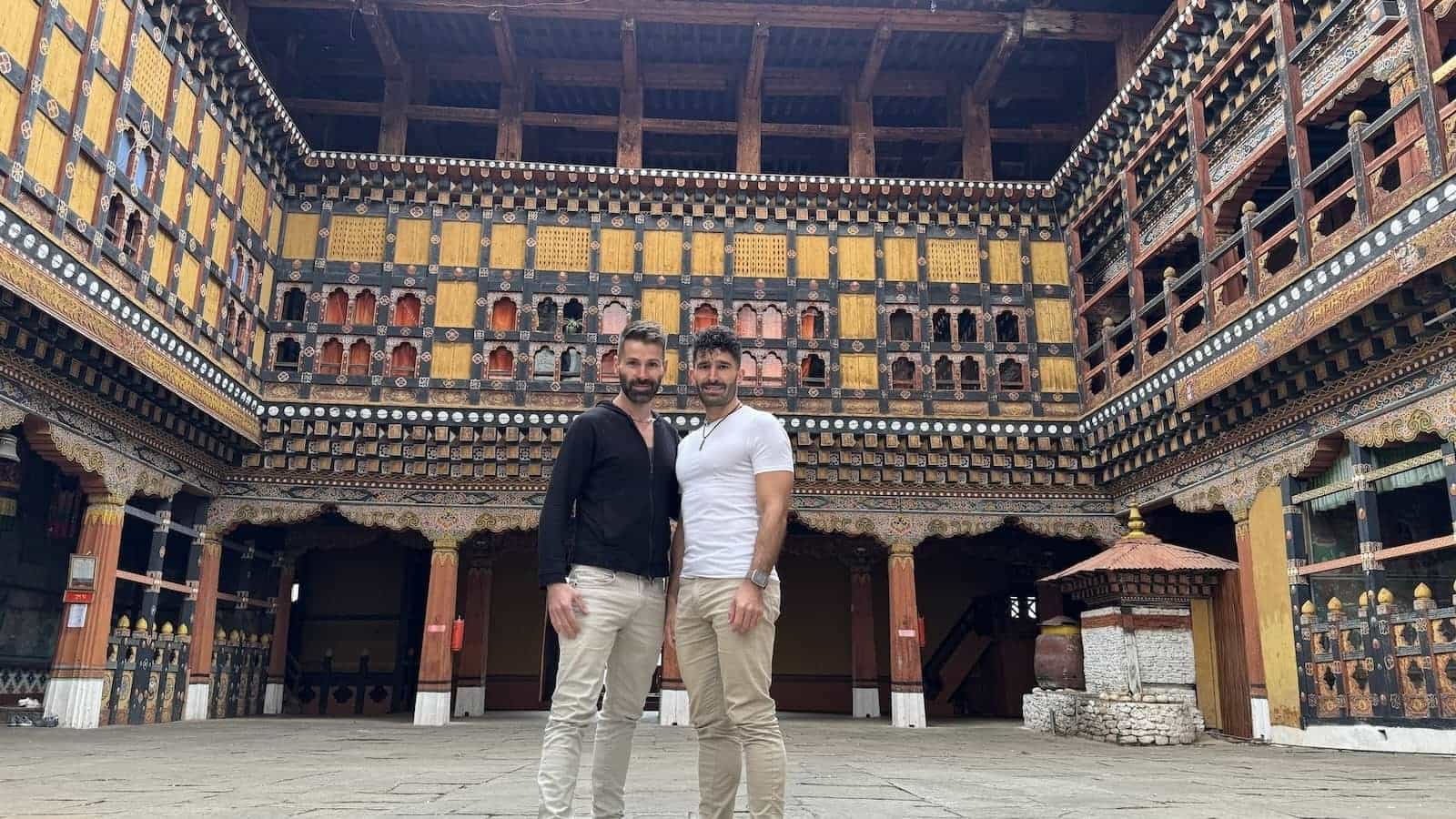
Marvel at the Tibetan wall art in the monasteries
We visited several monasteries and temples in Bhutan and each time we were blown away by the stunning intricate and detailed artwork. Some of it dates back centuries but is meticulously preserved! It's probably one of our most impressive takeaways that we would have bought some wall art from the souvenir shops in Paro to take back home with us if we had sufficient suitcase space. The most famous monastery is of course, Tiger's Nest, but other impressive ones to check out include Drak Karpo near Paro, which is precariously perched on a cliffside, the Tango Monastery in Thimphu, and the famed Chimi Lhakhang Monstery of Fertility, close to Punakha. Also, note that most of the Dzongs will have impressive monasteries inside them to marvel at.
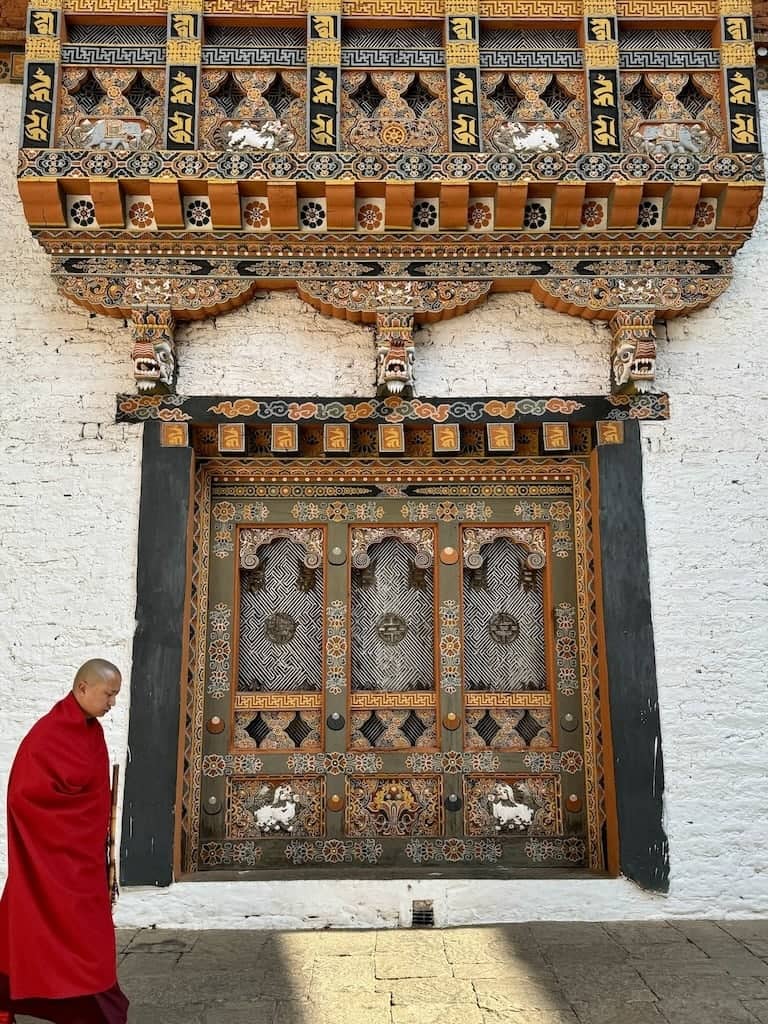
Enjoy the views at Dochula Pass
Dochula Pass is a handy stopover to break up the drive between Thimphu and Punakha. It is renowned for its 108 stupas, called Druk Wangyal Chortens. As the second highest pass in Bhutan located at 3,100 meters (10,200ft) altitude, it's also famous for the views, a 360-degree panoramic view of the Himalayas. Sadly when we visited, it was cloudy and freezing temperatures (it is after all pretty high up and we visited in the winter). However, we were instead rewarded with a beautiful landscape covered in a blanket of snow.
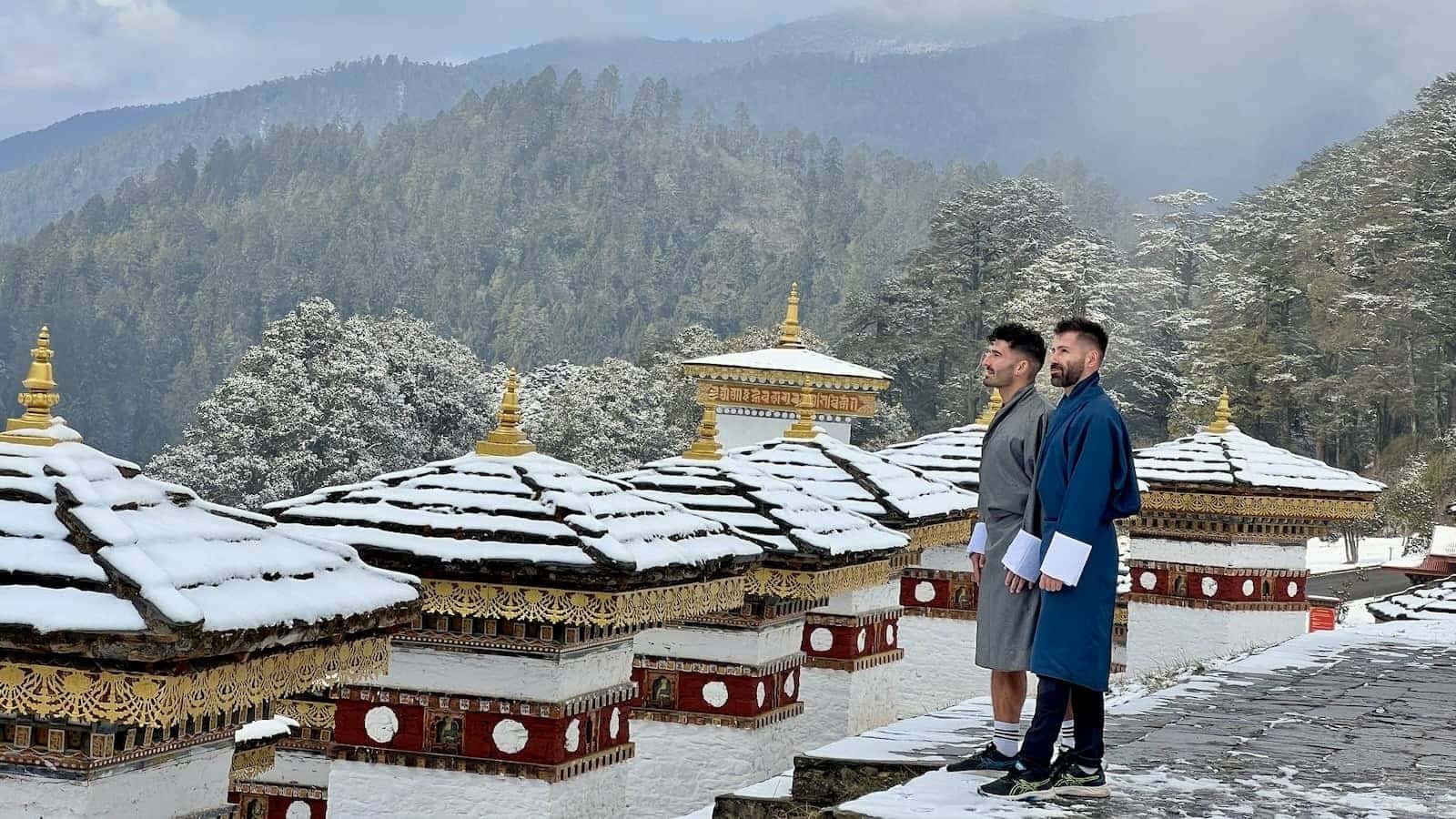
8. Gay friendly hotels in Bhutan
Thanks to Bhutan Mountain Holidays, our guides took extra care to ensure that we stayed in hotels that warmly welcomed gay couples. We never had any issues getting a double bed and the staff were not awkward about hosting a same-sex couple.
Another great test of this, you know those matching dressing gowns and hotel slippers they offer to guests? In most hotels, they offer one for a man, and the second, a smaller size for a woman. We always got two men's sizes instead. Although a minor detail, this speaks volumes about how welcoming these hotels are toward gay couples:
Gawaling Hotel in Paro
Our stay at Gawaling Hotel in Paro proved to be an exceptional experience. Nestled by the riverside just outside the main town, this hotel was our home base in Paro. The suite is glorious! It featured a private balcony that offered breathtaking views and a beautifully spacious room to unwind in. Adhering to the traditional Bhutanese style, the building itself resembled more of a museum, providing a unique and aesthetically pleasing backdrop that resonated with the cultural richness we had come to adore in Bhutan.
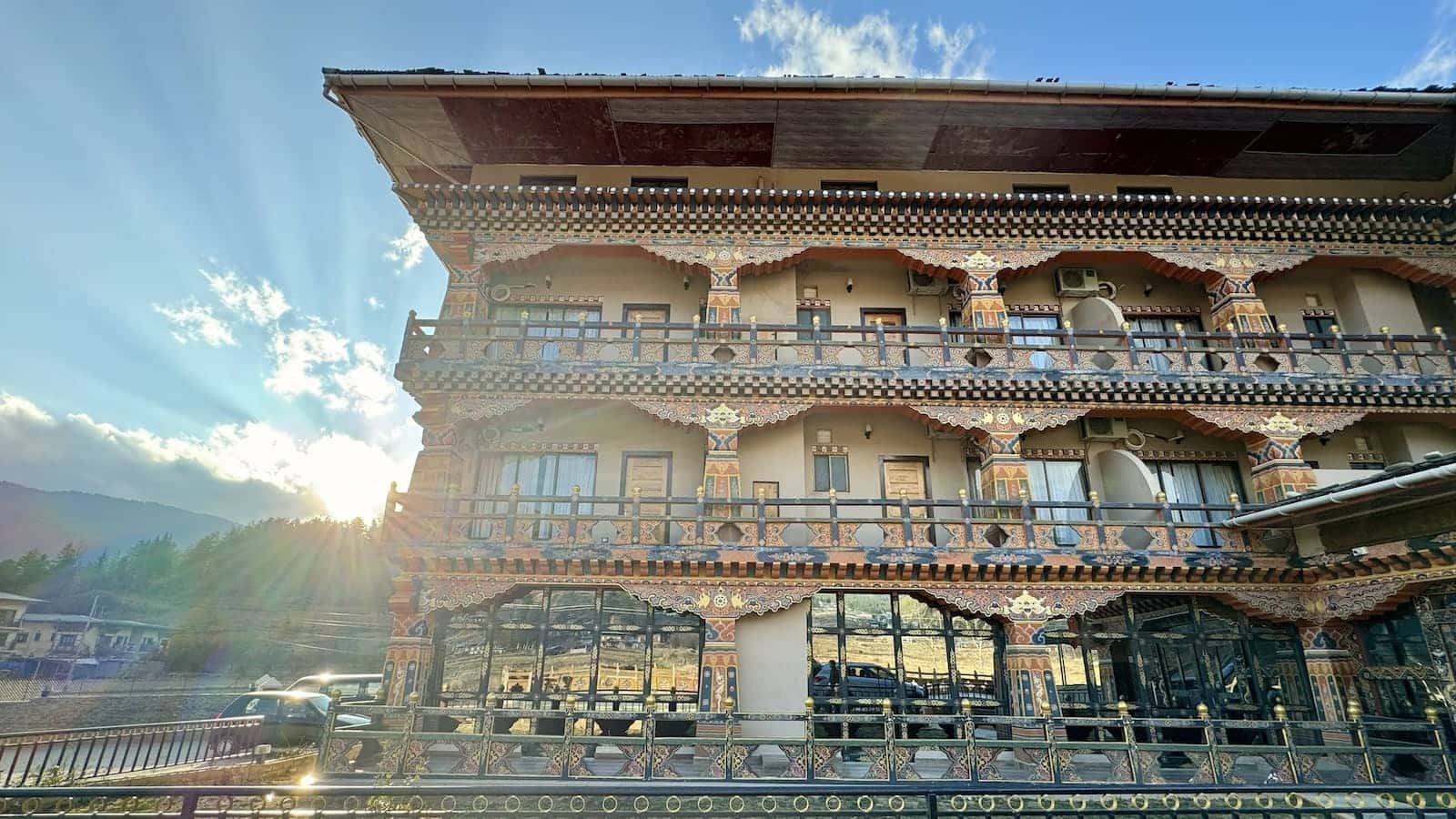
Drukgyal Twin Tower Hotel in Thimphu
Drukgyal Twin Tower is a luxurious hotel located just outside downtown Thimphu with an impressive view of the Tashi Chhodzong. Our stay here was nothing short of romantic, providing a tranquil atmosphere that felt like a serene retreat. The hotel's restaurant added to our experience by offering a diverse culinary journey, featuring everything from Bhutanese local specialties to tantalizing Tibetan, Chinese, and Indian cuisines. The Drukgyal Twin Tower Hotel effortlessly combines comfort, romance, and a touch of luxury, making it a delightful gay friendly hotel in Thimphu.
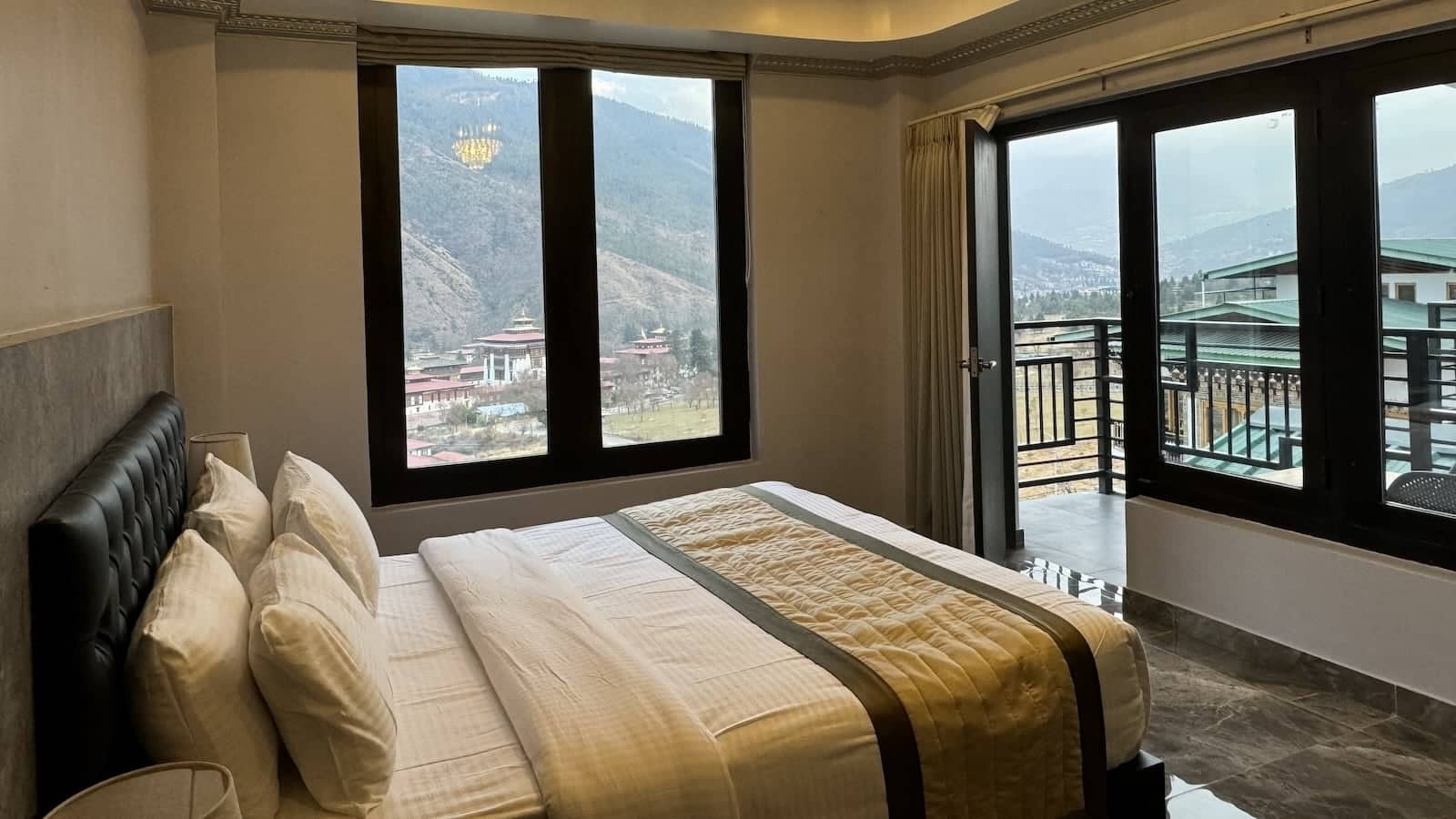
Hotel Lobesa in Punakha
Oh, now this is lush! Lobesa is a gorgeous hotel with a beautiful view over the Punakha Valley and the picturesque countryside that surrounds it. We recommend waking up early to watch the sunrise from your balcony – a truly magical moment! The rooms at Hotel Lobesa are not only vast but also exude a sense of comfort and luxury. Given the hotel's proximity to the Chimi Lhakhang temple and village, the hotel proudly embraces the phallic theme in some of its decor…cameras at the ready!
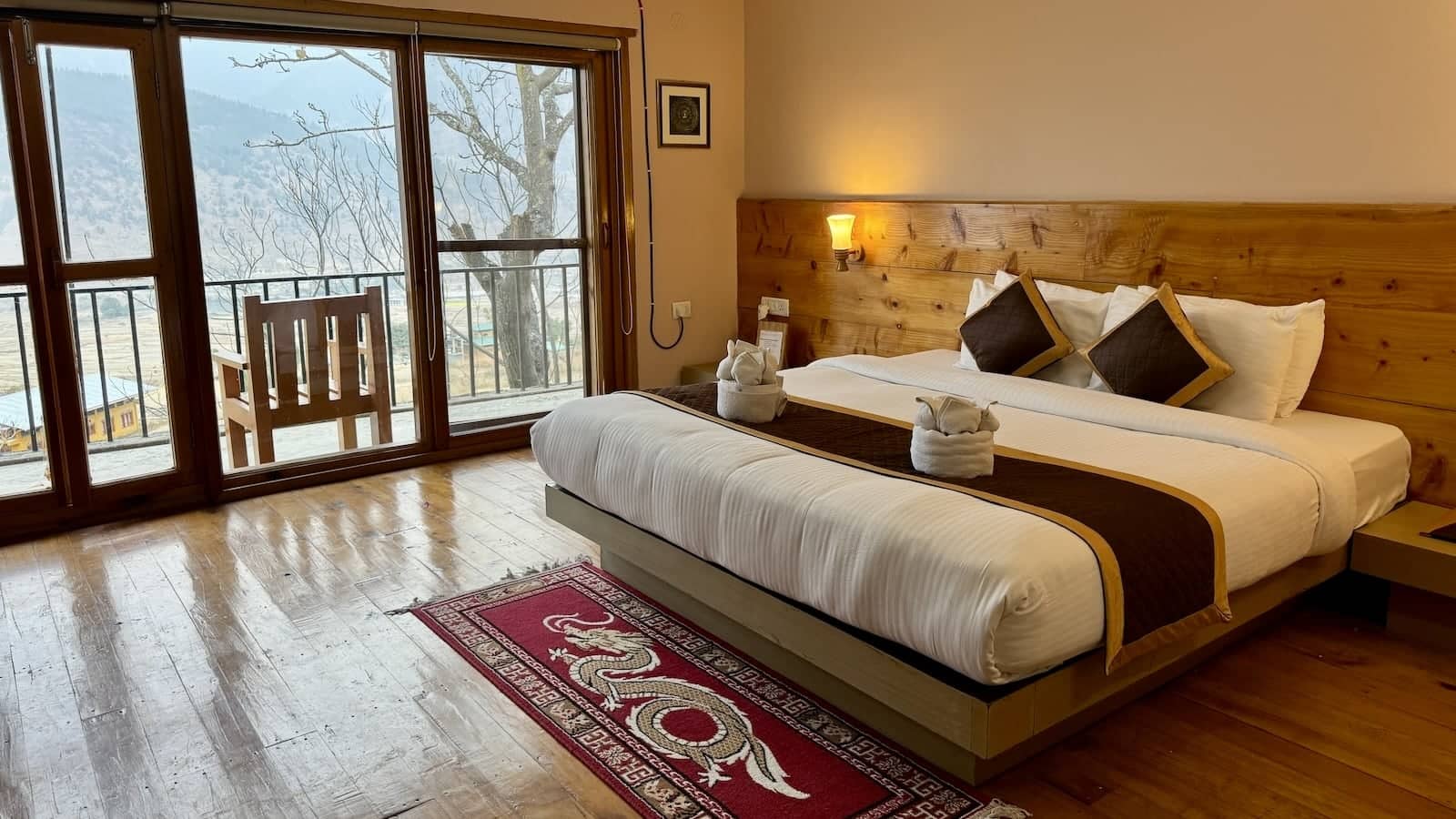
STAY WITH A GAY LOCAL
Misterb&b is the Airbnb equivalent for the LGBTQ community. Unlike on Airbnb, you know your host is gay, voiding any nasty surprises when you check-in. It is also a great way to meet gay locals and discover the underground gay scene. Click below to get 10 € (or $10) off our first booking.
9. Is there a gay Pride in Bhutan
There are no Pride events in Bhutan. That's not indicative of its level of gay friendliness. The reason is simply because any form of demonstration is frowned upon in Bhutan. In the words of Bhutanese LGBTQ activist, Tashi Tsheten, who is also the Director of Rainbow Bhutan:
“pride parades are a form of activism where people go out on the streets and talk about policy and legal changes, and that's not something that Bhutanese agree with. We believe in building human relations and talking one-to-one. Connecting heart-to-heart. That's where the real change happens”
Instead, an alternative form of celebration emerged with the subtle, yet significant, acknowledgment of the International Day Against Homophobia, Transphobia, and Biphobia on May 17, 2016. During this event, the United Nations offices in Bhutan launched a video campaign to advocate for the rights of the LGBTQ community and hoisted the rainbow flag for the first time at the UN House in Thimphu. The tradition has continued annually since then.
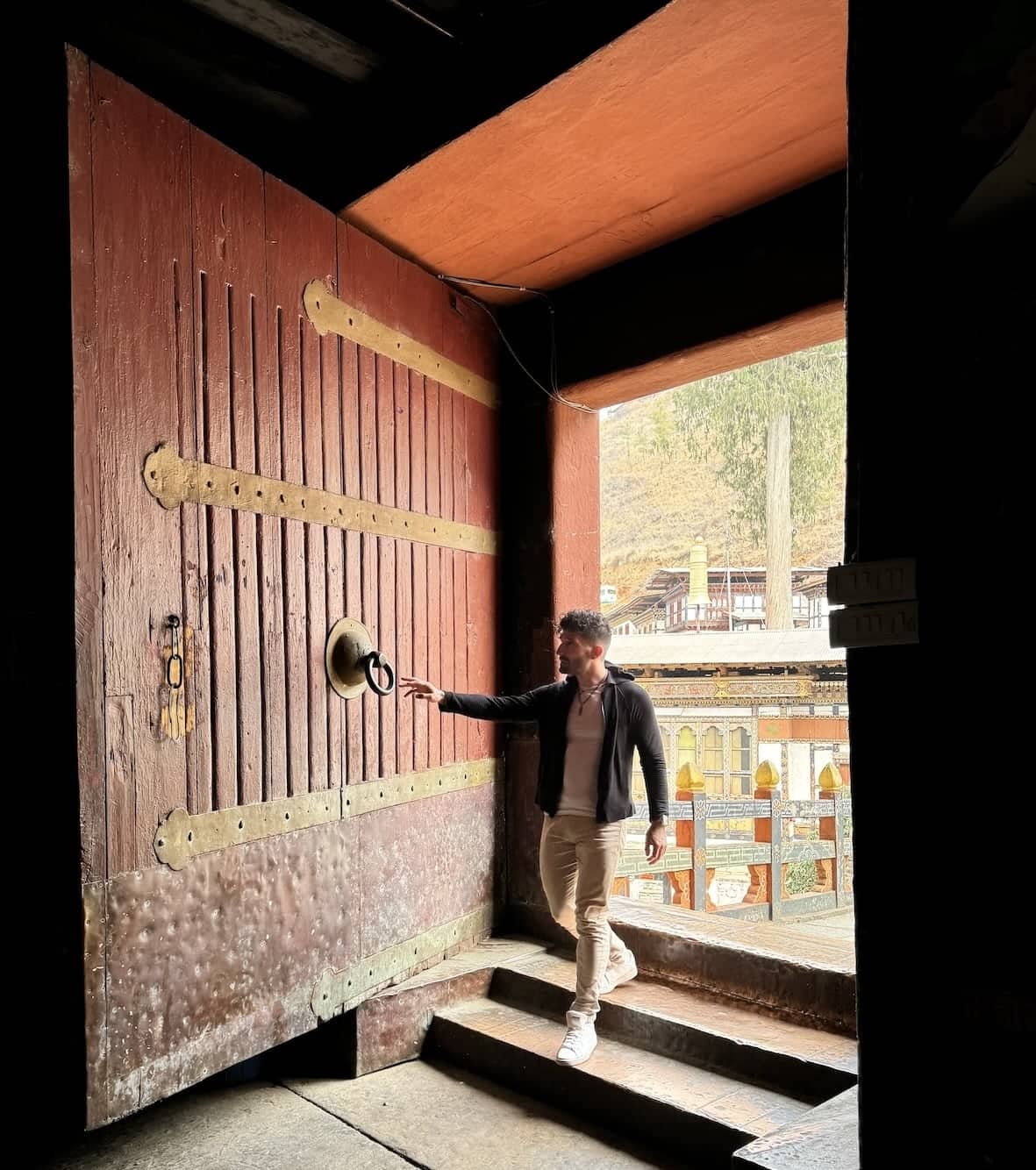
10. Try Ema Datshi and Momos!
Warning: Bhutanese food is spicy!
The cuisine of Bhutan takes its influence from Tibet and India. It features a lot of chili, cheese, and rice. We recommend asking your guide to eat where locals eat to get a more authentic experience as most tourist-orientated restaurants will have dumbed-down, milder (blander!) versions of the food.
We've set out some of our favorite must-try foods in Bhutan:
Ema datshi: the national spicy dish
The national dish is called ema datshi. This fiery delight features whole green or red chilies (ema) cooked with cheese (datshi). To say it's spicy is an understatement. For me, it was too much. My mouth was on fire! Seby, however, who has a higher tolerance to spicy food than me, was in foodie paradise! Our advice is to ask for a non-spicy version if you're anything like me. But if you're a spice aficionado, then dive in: this dish is made for you!
Momo-licious Dumplings
We first encountered Momos in Kathmandu when we discovered the Nepali cuisine. They are delectable dumplings generously filled with meat, cheese, or vegetables that are either steamed or fried. Craving an extra kick? Worry not: momos are accompanied by a zesty sidekick – a spicy sauce known as achar. Momos reminded us of the buuz dumplings we relished in Ulaanbaatar during our exploration of the Mongolian cuisine.
Shakam datshi: dried beef spicy delight
This was my favorite dish in Bhutan. Imagine succulent, chewy dried beef expertly cooked with finely chopped red chilies. If you're diving into the spicy realm, this is my personal choice! Now, Seby, not a fan of chewy meats, wasn't as enamored, but for those like me who relish biltong or beef jerky-type snacks, a plate of Shakam Datshi is a zesty zinger! The perfect harmony of chewiness and spice makes it a must-try for enthusiasts of robust and savory flavors.
Kewa datshi: potato cheese pleasure
A rare non spicy Bhutanese dish! Kewa datshi is a vegetarian stew that features potatoes (kewa), cheese, garlic, and chili. We tried a homemade version at our homestay at the Tshering Farmhouse in Paro, and it was a culinary triumph! With a soup-like consistency, it's often accompanied by rice to absorb the rich flavors. The main difference between kewa datshi and ema datshi is that potatoes replace chili peppers as the main ingredient, making this dish a flavorful yet milder alternative.
Shamu datshi: a mushroom melody
Another datshi variant, where chanterelle mushrooms take the spotlight instead of chili peppers. In this culinary symphony, mushrooms (shamu) dance with cheese, garlic, and chilis. My French husband is particularly passionate about mushrooms: he grew up foraging for mushrooms in the French countryside with his father every weekend. So for my Seby, he was smitten with shamu datshi!
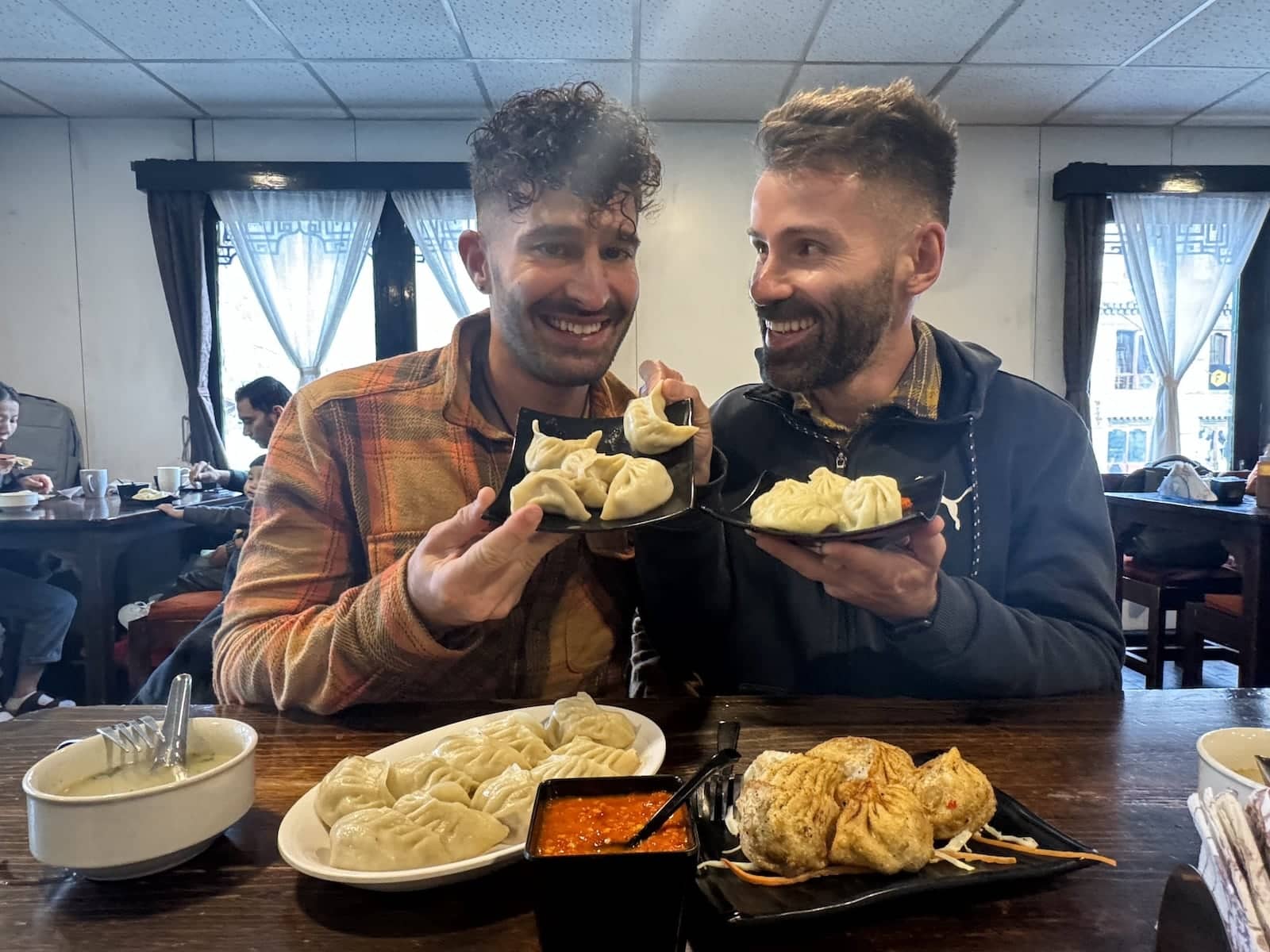
11. Safety practical tips for gay travelers to Bhutan
We've put together all the practical safety tips from our Bhutan trip. While most of these apply to all travelers, straight and gay alike, it's essential to be mindful of local customs:
Avoid PDAs
As mentioned above, Bhutan is a conservative country where all public displays of affection are generally frowned upon. We rarely saw straight couples being tender with each other in public, so we agreed to do the same. This was not out of any homophobia, simply out of respect for the local culture. Therefore, it's advisable to refrain from overt expressions of love in public spaces.
Bring USD dollars
The currency in Bhutan is ngultrum, which is pegged to the Indian Rupee. However, a lot of the ATMs are quite unreliable, and some rarely work. We were advised to bring around $500 cash to cover day-to-day expenses like coffee (we drink a lot of it outside of meal times!), souvenirs, and of course tipping (see below). Remember that all hotel and food expenses will be covered in the cost of your tour. Practically, it's easy to exchange dollars for ngultrum. Some large hotels, shops, and restaurants will accept dollars. Your guide/driver will certainly accept their tips in dollars.
How much shall I tip my guide and driver in Bhutan?
Tipping is a personal gesture matter and there's no fixed rule for the amount. Ultimately, it's a reflection of your satisfaction and appreciation for the service received.
If you decide to tip (and we recommend it, as it directly benefits the local community), we were each advised to budget $12 per day for the guide and $10 per day for the driver. Tipping traditionally takes place at the end of your trip.
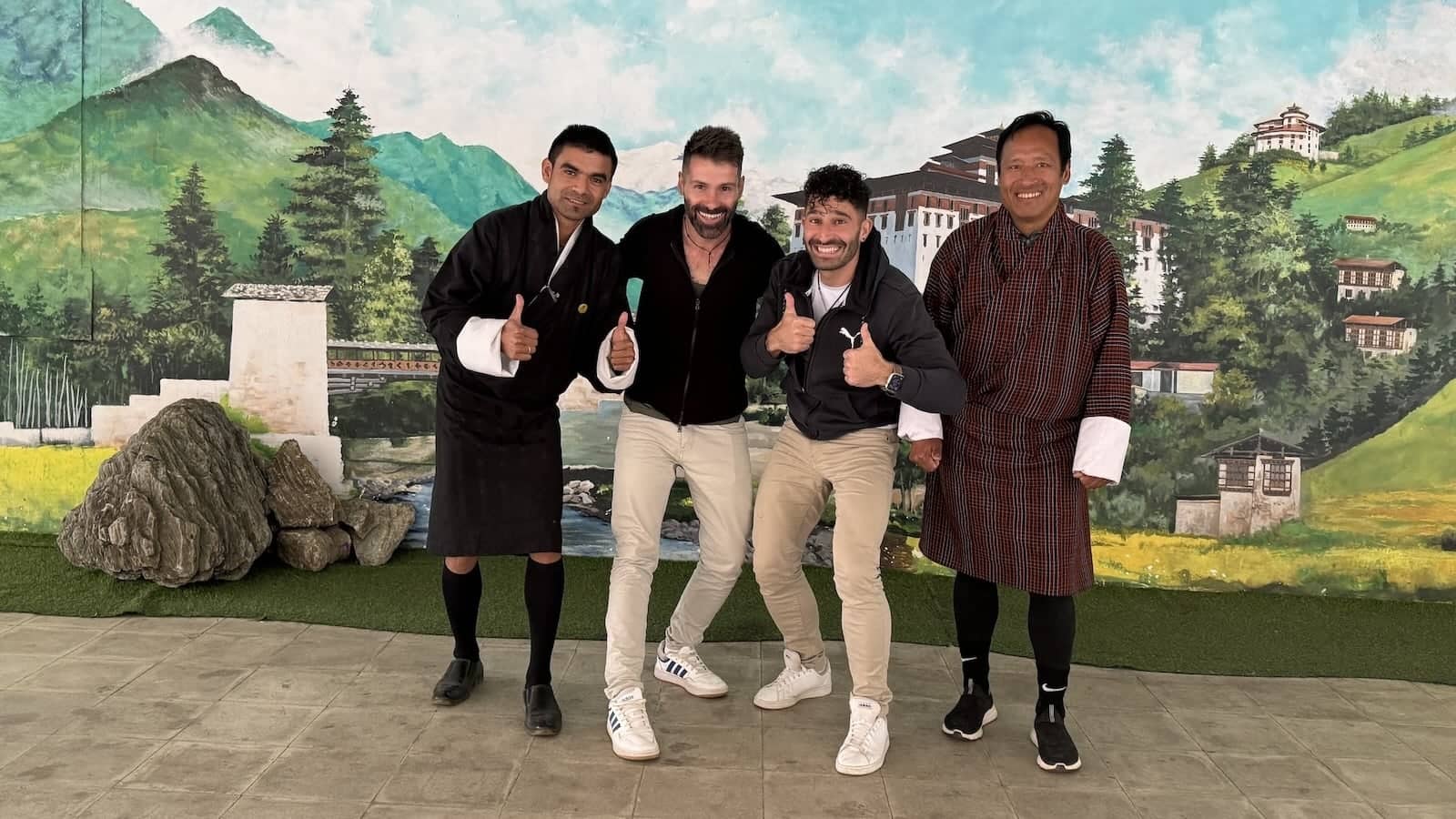
Don't bother bringing a drone
Drones are banned in most places in Bhutan, and getting a license to fly them is a bureaucratic challenge. Our best advice? Save yourself the trouble and leave the drone at home. If you've already packed one, consider leaving it safely in your hotel in Delhi, Singapore, or Bangkok during your Bhutanese journey, retrieving it upon your return.
Altitude sickness
Bhutan is tucked away in the Himalayan Mountains with elevated altitudes. To give you an idea, Paro and Thimphu sit at an average elevation of approximately 2,250 meters (7,380 ft) while the iconic Tiger's Nest Monastery soars to 3,120 meters (10,236 ft). While we navigated the altitudes relatively well, we had to stop to catch our breath a few times during our hike up to Tiger's Nest. We recommend reserving this exhilarating hike for the later part of your journey, allowing your body ample time to acclimate to the higher elevations.
Bring an empty suitcase!
Okay, maybe not entirely empty, but consider this a friendly nudge to leave some space for the treasures you'll undoubtedly want to bring back from Bhutan. The incredible artwork and unique souvenirs are bound to capture your heart, and having a bit of extra room ensures you can indulge in mementos that resonate with your Bhutanese adventure. While a small carpet was our ideal souvenir, due to lack of suitcase space we instead bought a large wooden phallus and a stunning bed runner adorned with Bhutanese artwork.
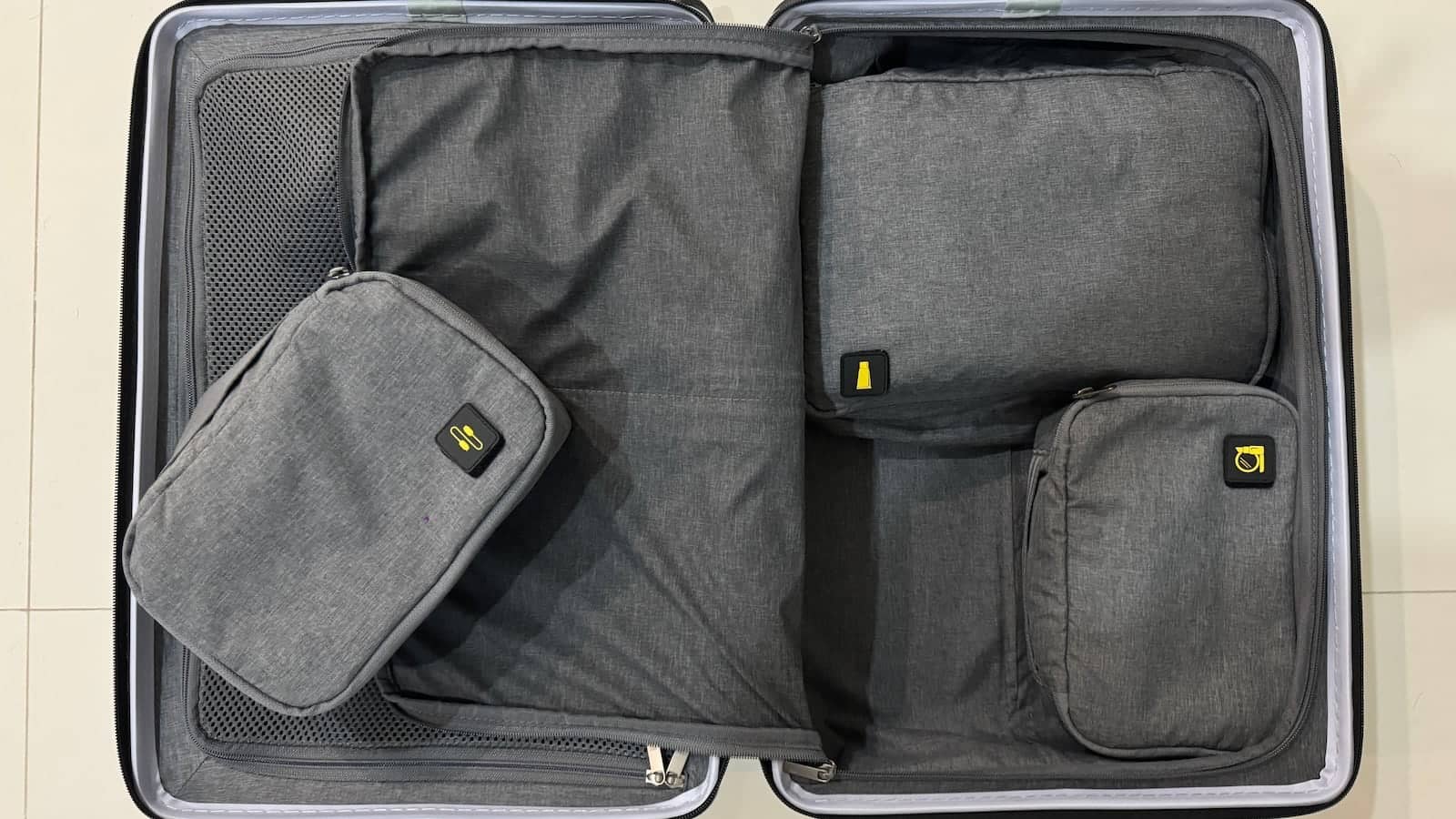
Buy a SIM card
We do this anyway for all our trips as we like to post on our social media. Two kiosks sell SIM cards at Paro Airport just before the exit in the baggage hall: TashiCell and B-Mobile (Bhutan Telecom). They offer the same tourist package depending on how much data/calling credit you want for your trip. The process is quick, inexpensive, and ensures you have a reliable connection, especially in case of an emergency. We opted for TashiCell, primarily because there was no queue at the time, but both options provide solid coverage for your Bhutanese escapade.
Pack a hot water bottle!
This was Seby's suggestion because he's quite sensitive to the cold. If you visit during the winter months like we did, it gets pretty cold at night, particularly in Paro and Thimphu. Most buildings don't have the most robust insulation and the evenings can get quite cold. If, like my Seby, you're also sensitive to the cold, ask reception for a heater for your room, and consider packing a hot water bottle!
Plan for all weathers and pack layers
Bhutan's diverse landscapes come with equally diverse weather, often transitioning through all four seasons in a single day. For this reason, we advise packing layers rather than bringing a thick coat. This allows you to easily adjust to changing temperatures by adding or removing layers as needed.
Plan ahead: at least 2 months!
Embarking on your Bhutanese adventure requires a bit of pre-planning, and we recommend initiating the visa paperwork process at least 2 months before your intended trip. While our journey went smoothly, thanks in part to the efficient support from Bhutan Mountain Holiday and their solid connections with government offices in Thimphu, bureaucratic processes can occasionally cause delays. To ensure a stress-free experience, play it safe and apply for all necessary documentation well in advance
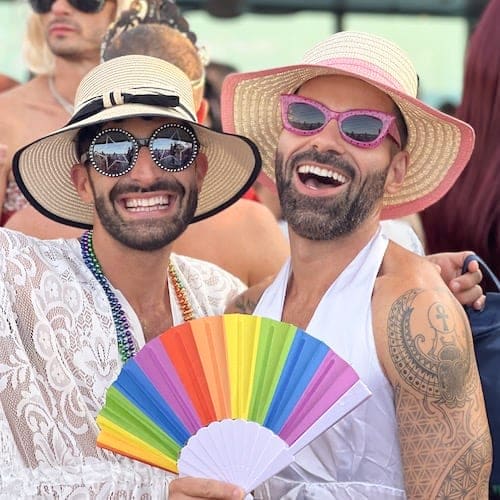
Travel worry-free!
Don't skimp out on your travel insurance: make sure your trip is fun, frivolous, and free! Most importantly, good travel insurance will cover you for loss from petty theft, medical emergencies, flight cancellations, pricey hospital bills, car rental protection, and more.
We recommend reading our article about the importance of travel insurance so you can assess which policy is best for you.
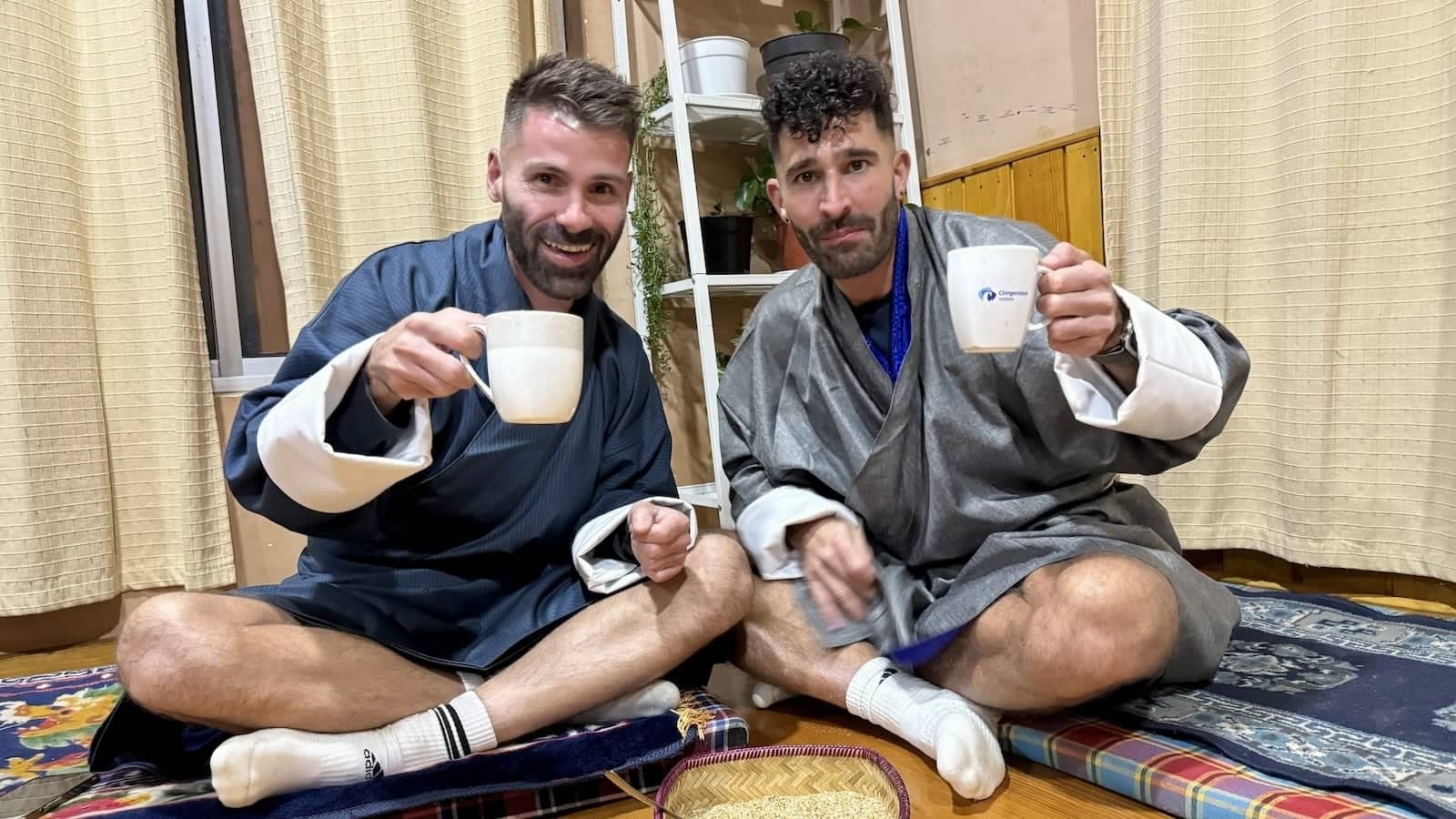
Read more travel adventures like this in our book!
We've published our very own gay travel book called, ‘Out in the World'. It has all our practical safety tips, first-hand advice, and travel stories from some of our favorite destinations.
We hope it inspires you to have a fun and safe trip!
Click on the book to order:

For more inspiration:
- Read our detailed gay guide to India
- As well as our gay guide to Nepal
- Flying in from Singapore? Hit up our handy gay guide to Singapore
- Read about our experience traveling on the Trans Siberian as a gay couple
- Read what we rate to be the most gay friendly countries in the world

